<!–

Man has idea to go very fast. Man spends too much time and money. Man goes a little bit fast.
That’s how these update stories for Project NSX usually play out. It’s a sports car and I want to do sporty driving in it, so that’s where I’ve focused on honing the car up to this point. As we discussed in the last update, however, my NA1 is approaching a completion point – it is equal parts fast, fun, reliable and useable.

Yes, the best feels behind the wheel are on an empty alpine road or a racetrack, but for most of us the journey to those places is a solid slug of slow city roads and boring highways, often for hours at a time. A good podcast or playlist can be the difference between that being a road trip and a chore.
Listening to some contemporary high-end OE systems made Project NSX’s speakers sound like an iPhone with a toilet roll taped to the bottom in comparison. Deleting the system could save about 6kg (13.2lb), but once that was ruled out it was decided that if I was going to have a sound system it had to at least be up to standard with the rest of the car. Time for lockdown project #2…
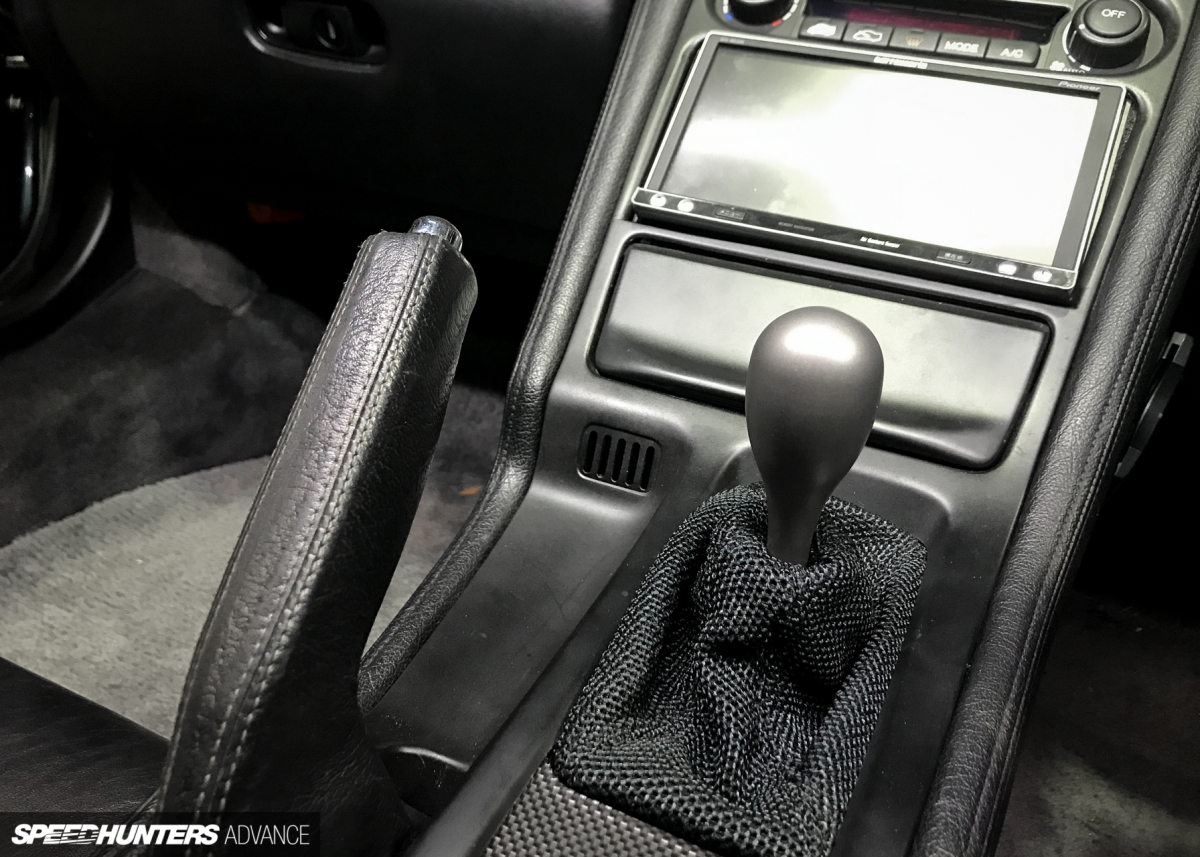
A previous owner had already ‘upgraded’ the factory head unit to a 2DIN Carozzeria which was packed with a hidden CD drive, TV tuner and GPS, the latter two not working outside of Japan. Apparently it also had a feature called ‘air gesture’ which seems to let you change songs just by swiping your hand through the air, although I never attempted to verify this. Even if the Carozzeria unit was capable of providing good beats, the lack of amplifier meant the speakers would ‘clip’ (run out of power) at even moderate volumes and it sounded as if the driver’s side door speaker had given up completely.
Now as you read this it will probably seem like all the work happened quickly and to plan, but the reality was that each component install was its own distinct sub-project, often with weeks between each part being finalised. I’ve swapped out old stock speakers and head units for aftermarket bits in previous project cars, but this was the first time I’d really put an effort in to ensuring that each piece worked together to create a powerful but well-integrated end product.
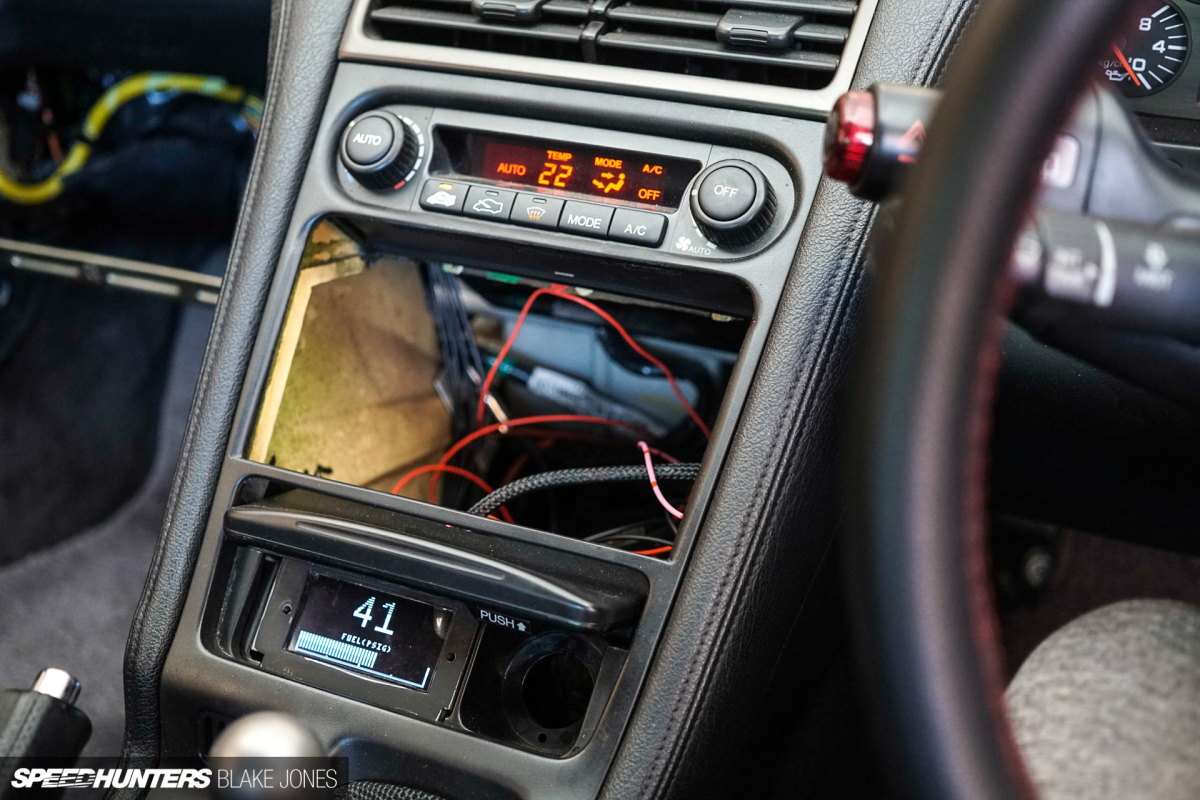
The head unit is the heart of a system and today’s units are packed with more technology than ever before. Once you’ve gone Apple CarPlay you can never go back.
I’d spent a few months plugged in to the ecosystem in my new daily driver and quickly decided the NSX needed an upgrade soon. Other head unit criteria? High-powered pre-amp outputs (4 or 5V), good equaliser software and customisable unit lighting (to match the NSX’s stock red/orange displays). It’s been a decade since I’d bought a CD, so I’d also be opting for a unit without a disc drive to save money and weight. There were plenty of suitable options from different brands, but a good deal came up on the Pioneer DMH-Z5350BT so I picked one up.
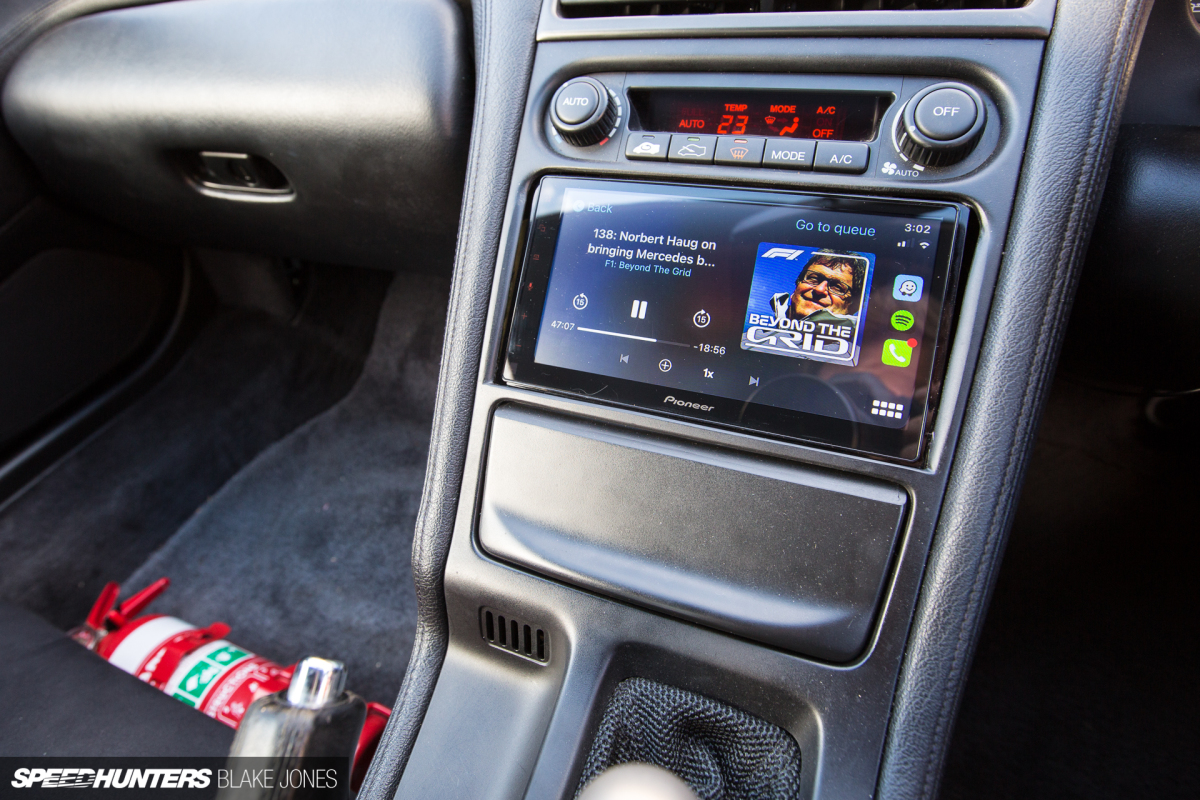
The head unit was the easiest install – since I was replacing an aftermarket 2DIN with another 2DIN, the physical fitment was easy – and lucky for me the old Carozzeria is actually a Pioneer product, so even the existing ISO adaptor harness plugged straight in. Losing all those unnecessary features actually meant the new head unit weighed 1.4kg (3.0lb) less than the old – who says a sound system isn’t a performance mod?!
All the cables that ran from the centre console through the A-pillar associated with the TV and GPS antennas were stripped out while I was in there.
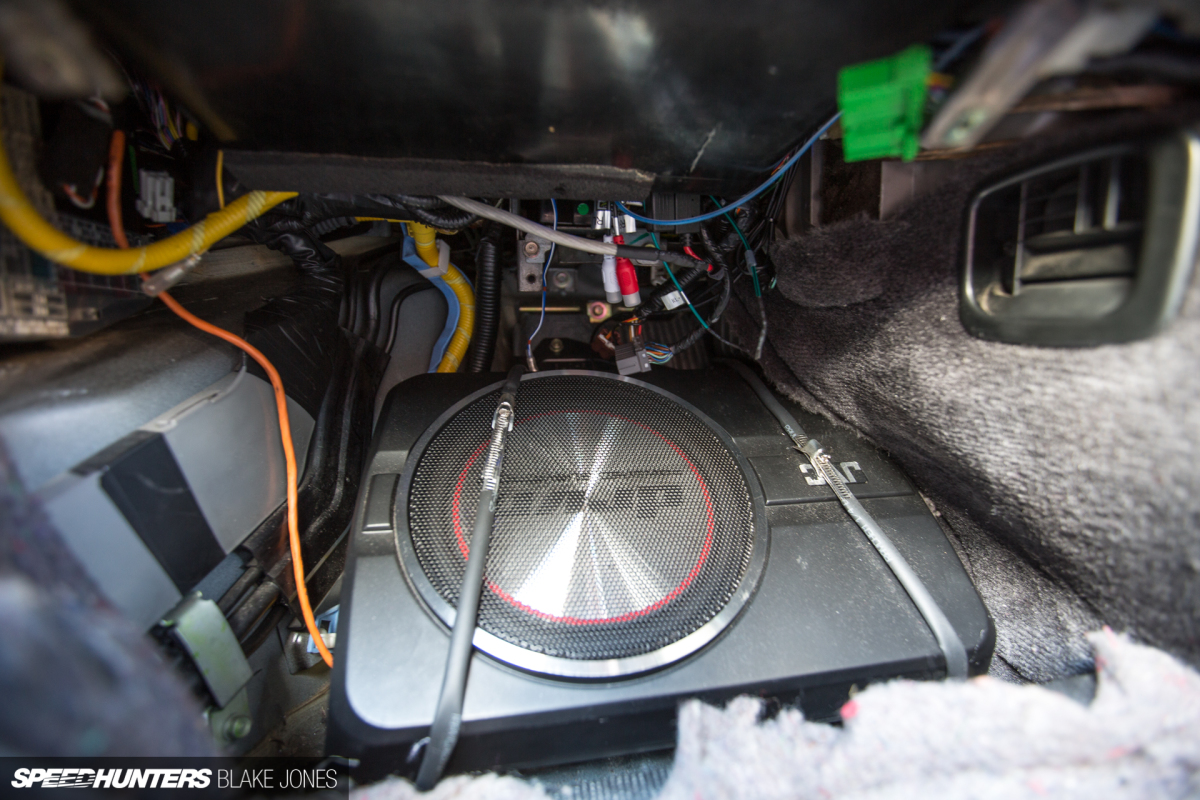
Next, the subwoofer: JVC’s CW-DRA8 was my choice here. The 8-inch woofer is driven by an integrated amp so I could simply run RCA cables to the head unit. At 250W it has more than enough power for the small cabin, and the efficient Class D amplifier can be powered from a nearby fused supply rather than direct from the battery. With a little bit of persuasion I mounted it in the stock (passenger footwell) location using steel clamps coated in heat-shrink to minimise unwanted vibrations. I’ve seen plenty of subs enclosures just left to ‘float’ or secured by velcro – an easy installation but a huge injury risk in the case of an accident. It is invisible under the carpet, but being a different shape to the standard Bose sub feels a bit odd for the passenger’s feet. I will probably shape some foam around the CW-DRA8 to try and improve this.
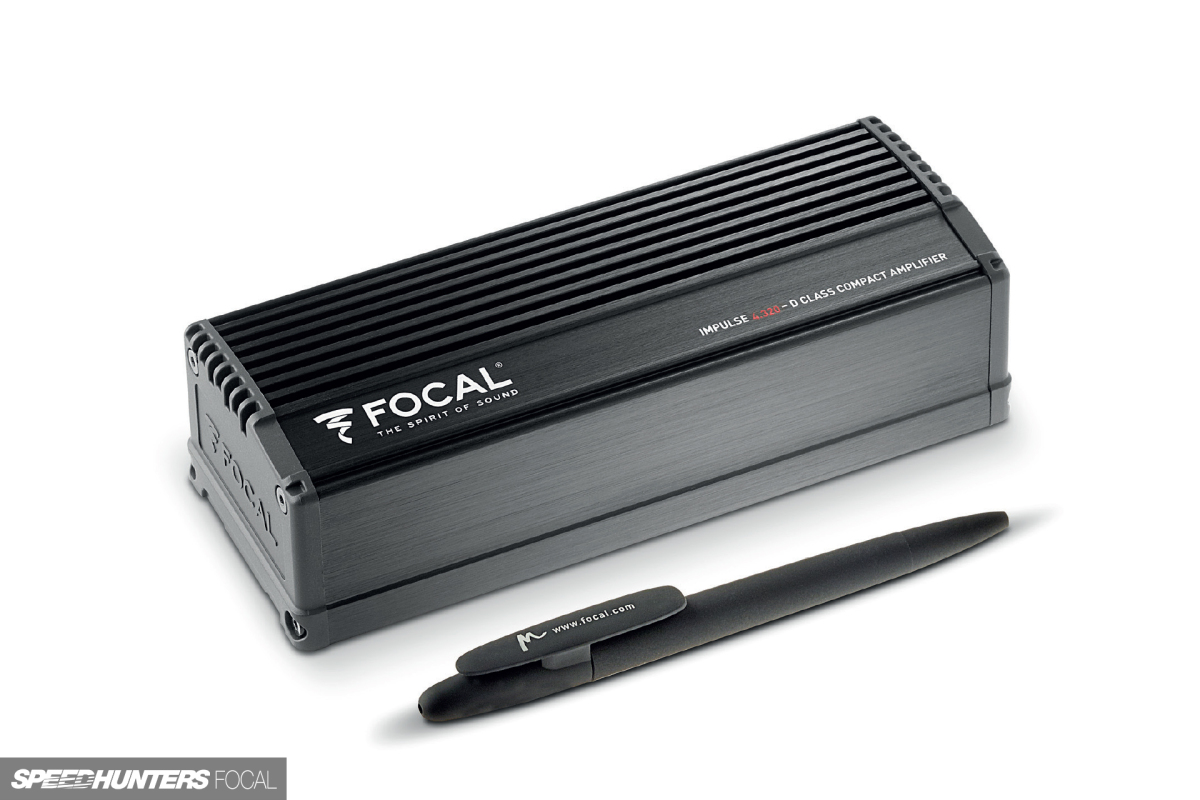
Just out of shot above the subwoofer is the amplifier – a Focal Impulse 4.320. The tiny size was core to my overall install being as simple and lightweight (only 545g (1.20lb) as possible – it was compact enough to fit in the computer rack behind the glovebox, in the empty spot left by the removal of the ABS computer. It thus has the shortest possible distance to run cables from both the head unit and battery. The amp is switchable between 2/3/4 channel, which was an important feature for this install that I’ll discuss later.
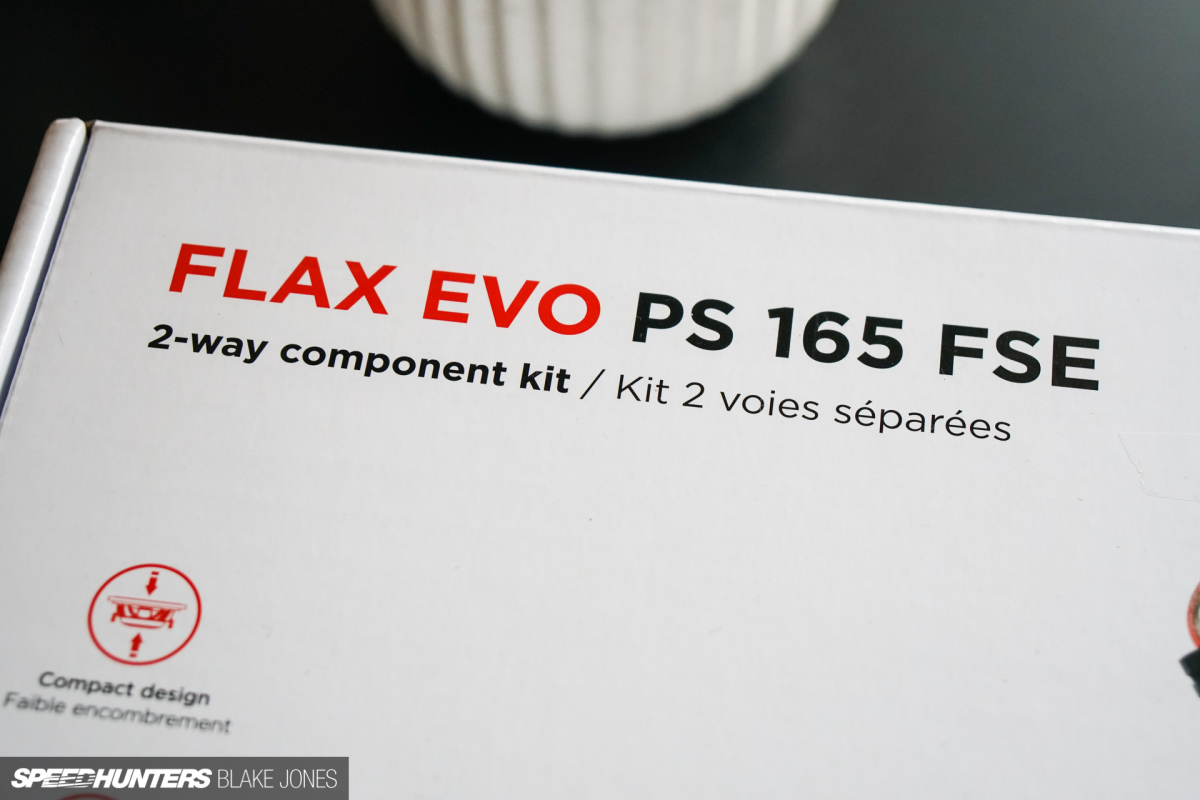
The amplifier was the first Focal product I’d ever bought, but the quality of both the product and supplied documentation made an impression. When it came to deciding on a door speaker solution – probably the most important contributor to in-car sound quality – I thought I’d see what the French brand had to offer.
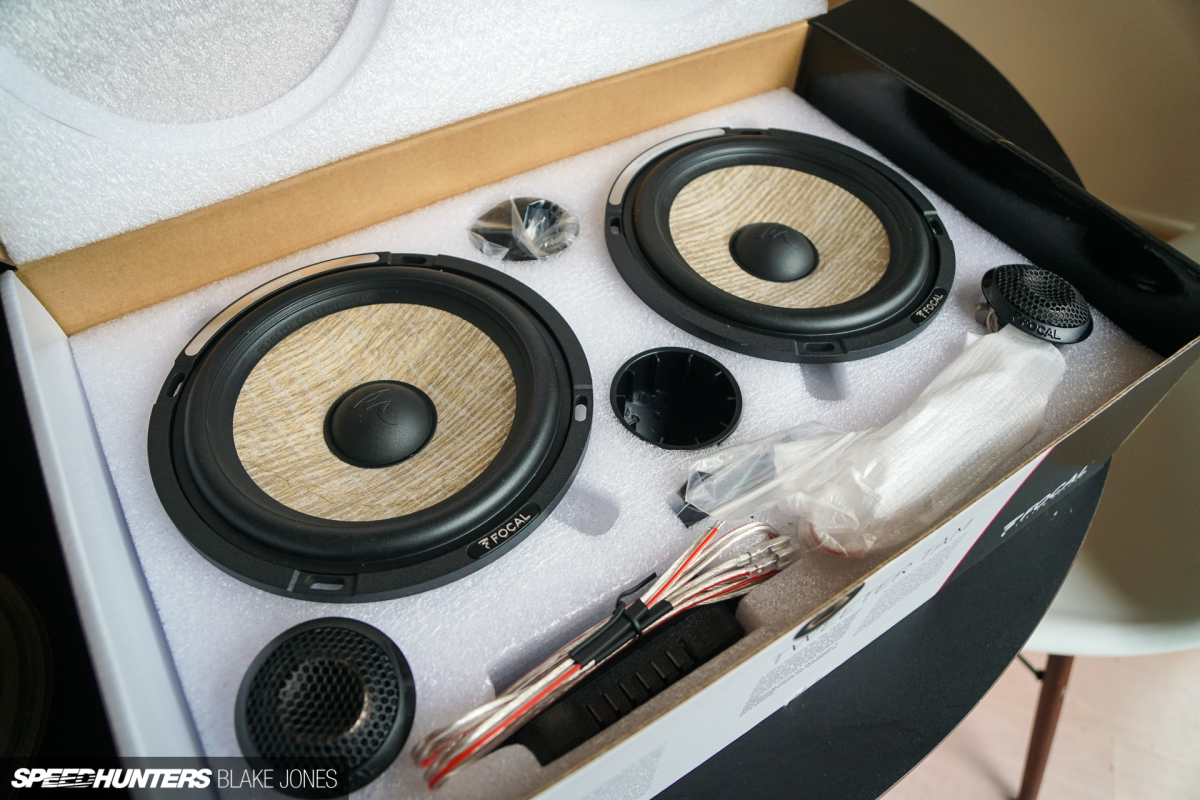
Even within one brand’s line-up there’s a paralysing amount of choice when it comes to speakers. Focal’s range stretches from ‘affordable quality’ into ‘baller audiophile’ territory, with price tags to match. Where I settled was somewhere in the middle – the Flax Evo PS 165 FSE component speaker kit.
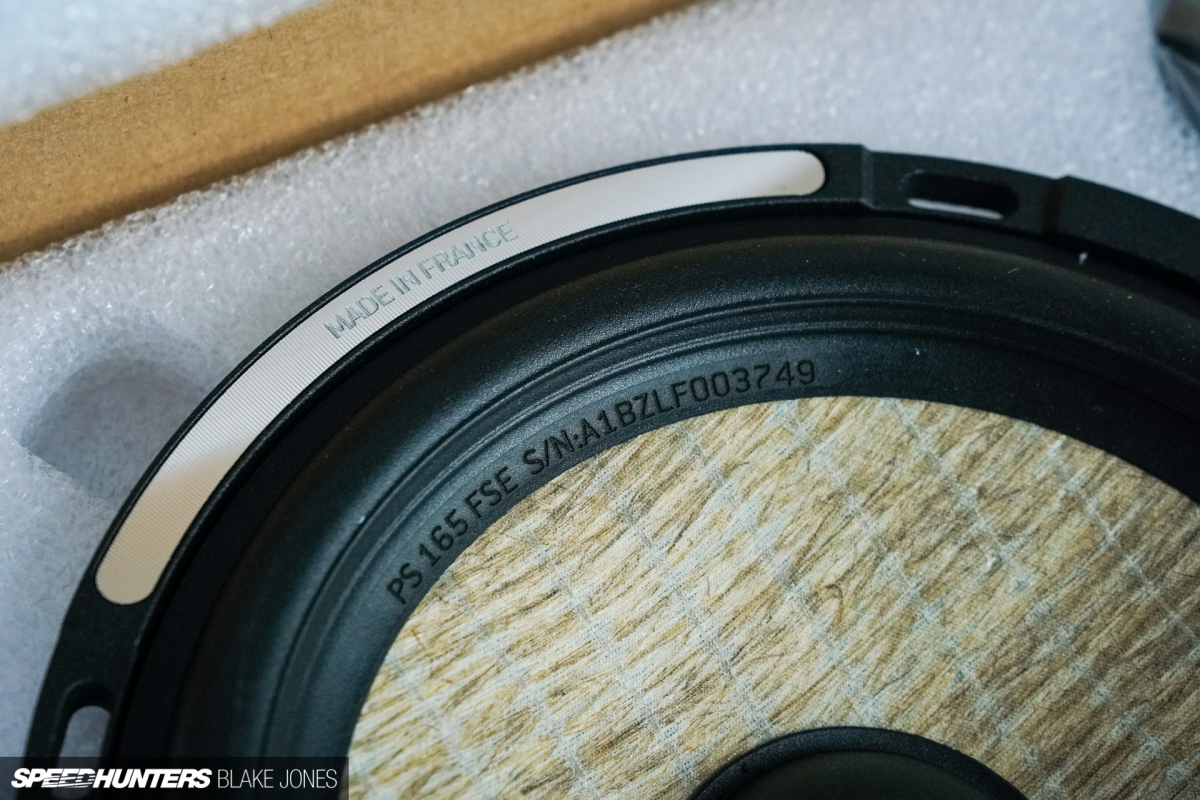
The Flax name comes from the unique use of organic flax (linseed) in the speaker cone. Apparently France is a hub of flax production in Europe, and the Focal engineers identified the light weight, rigidity and damping properties as ideal for a speaker cone. It certainly looks interesting.
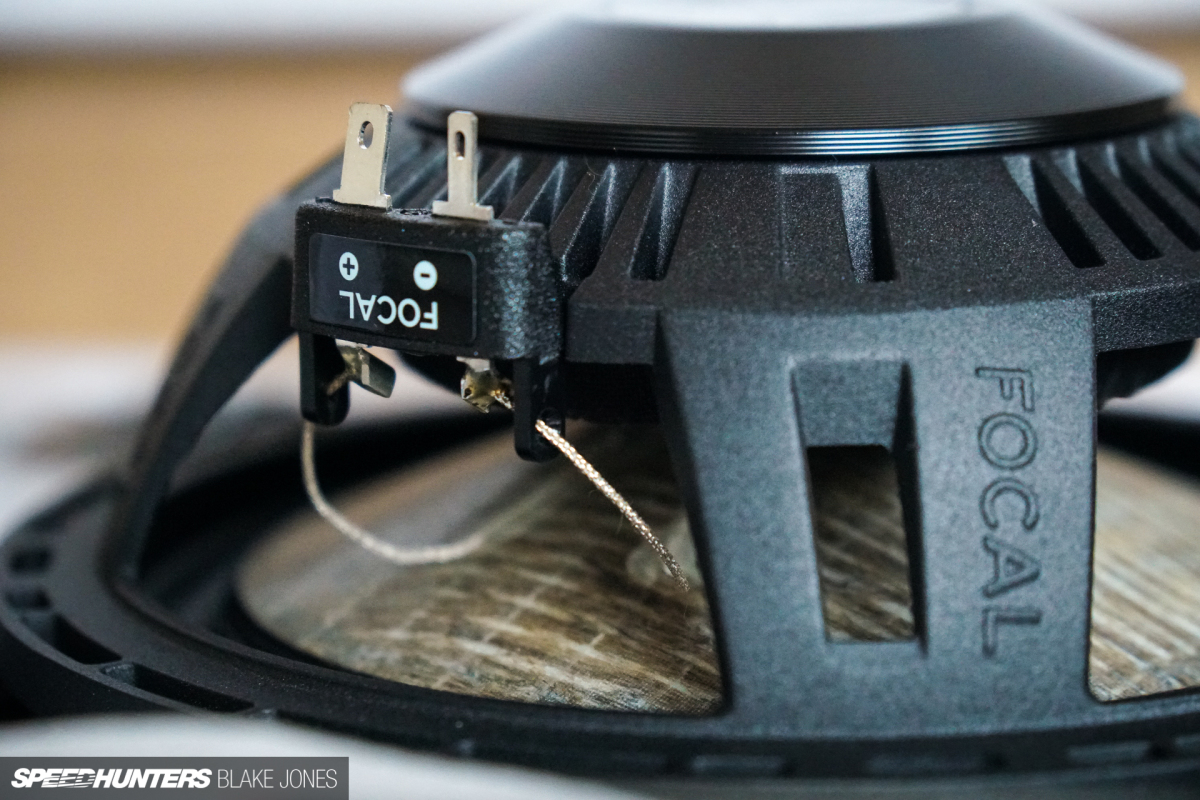
The overall quality of the speakers was very impressive – sturdy terminal mounts and an attractive powder-coated aluminium frame holding it all together.
Speakers typically use a large iron-based magnet to generate sound, but the ‘FSE’ variant of the Flax speaker trades it for a relatively tiny neodymium magnet. This allows the speaker to be slimmer in profile and weigh 40% less than the same design with a typical Ferrite speaker magnet. I won’t pretend this fact makes these race car parts, but it does help to nicely offset some of the weight added by other parts of the system.
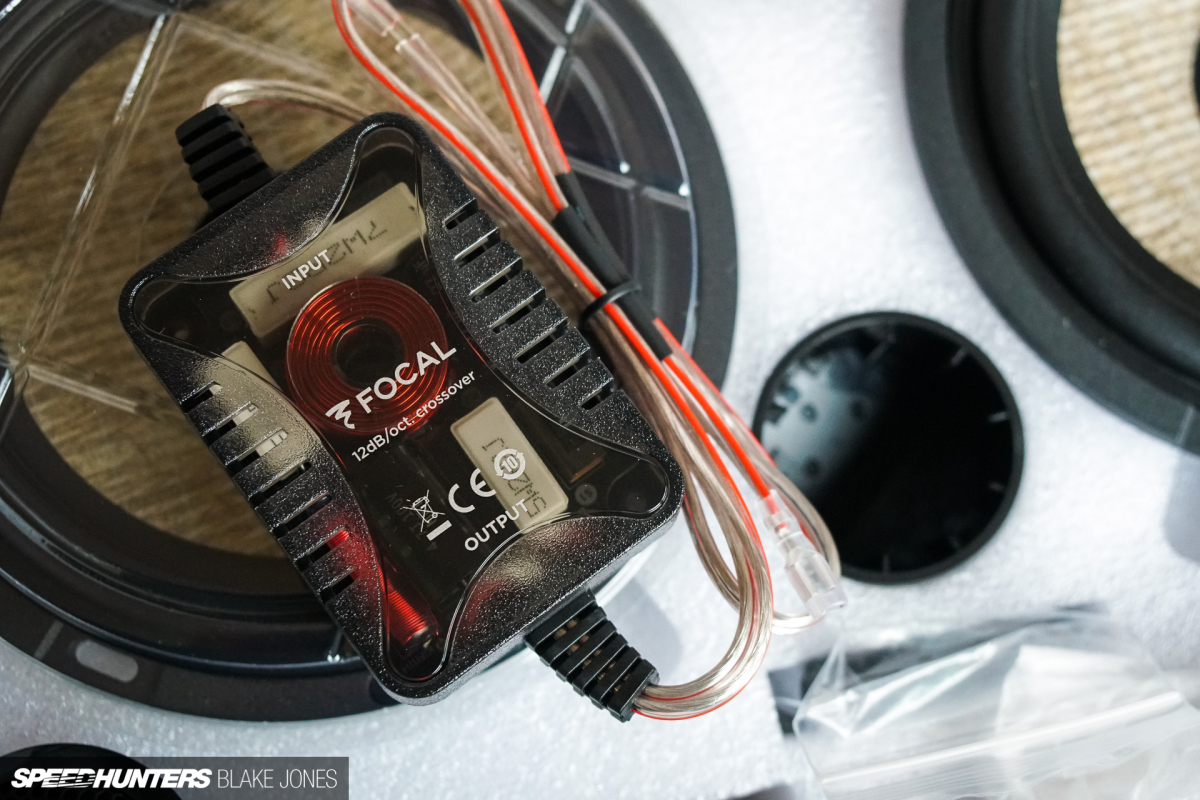
Compared to a more common coaxial speaker, a component speaker kit divides the speaker into different components – the main driver handles the mid and mid-bass frequencies, while a seperate tweeter is dedicated to the higher frequencies. This passive crossover unit separates the frequencies from the source into a seperate mid and high, meaning each speaker is only requested to play the frequencies that it excels at.
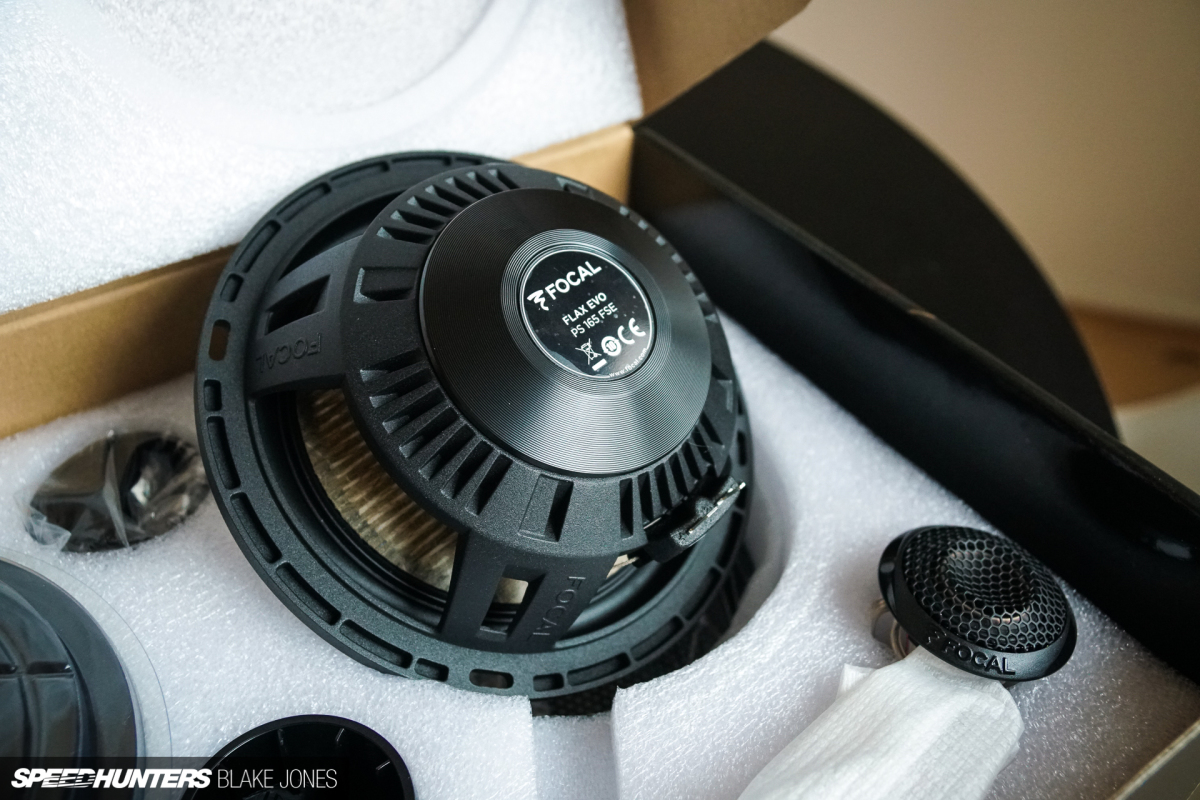
The main driver measures in at 6.5-inch, a decent step up from the stock 4-inch and the 5-inch coaxial speakers the car’s previous owner installed.
Waiting for me behind the door trim was this sorry sight. The factory moisture barrier had been partially removed to service the window regulators a few years back and was effectively destroyed in the process. One reason for the horrible sound quality also became apparent – the old driver’s side speaker had been installed in such a way that the positive wire would be pulled out of the terminal by the window glass when lowered completely. A slightly longer speaker cable would’ve solved the problem, so I just hope the previous owner didn’t pay top yen for this shoddy workmanship.
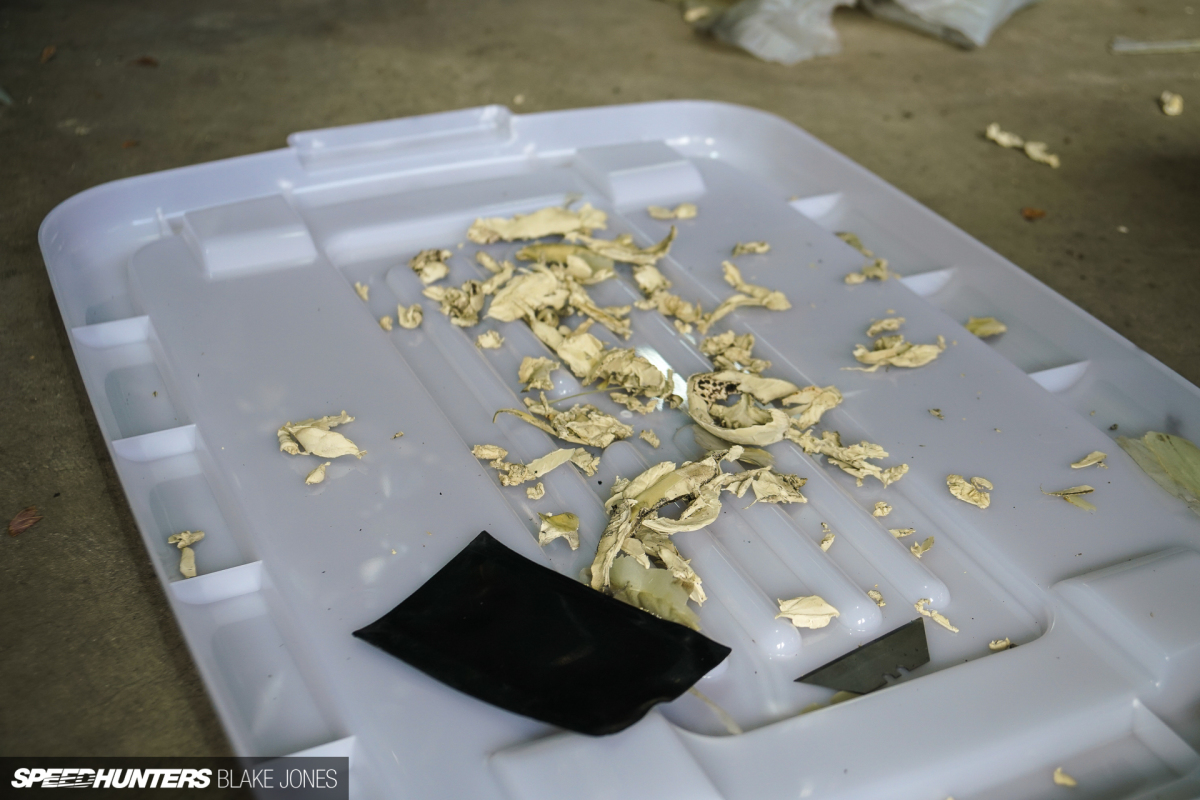
I got to work with a plastic scraper and some methylated spirits to remove the thick glue with which the barrier had been installed. One of those tedious jobs that is both time-consuming yet satisfying to work through.
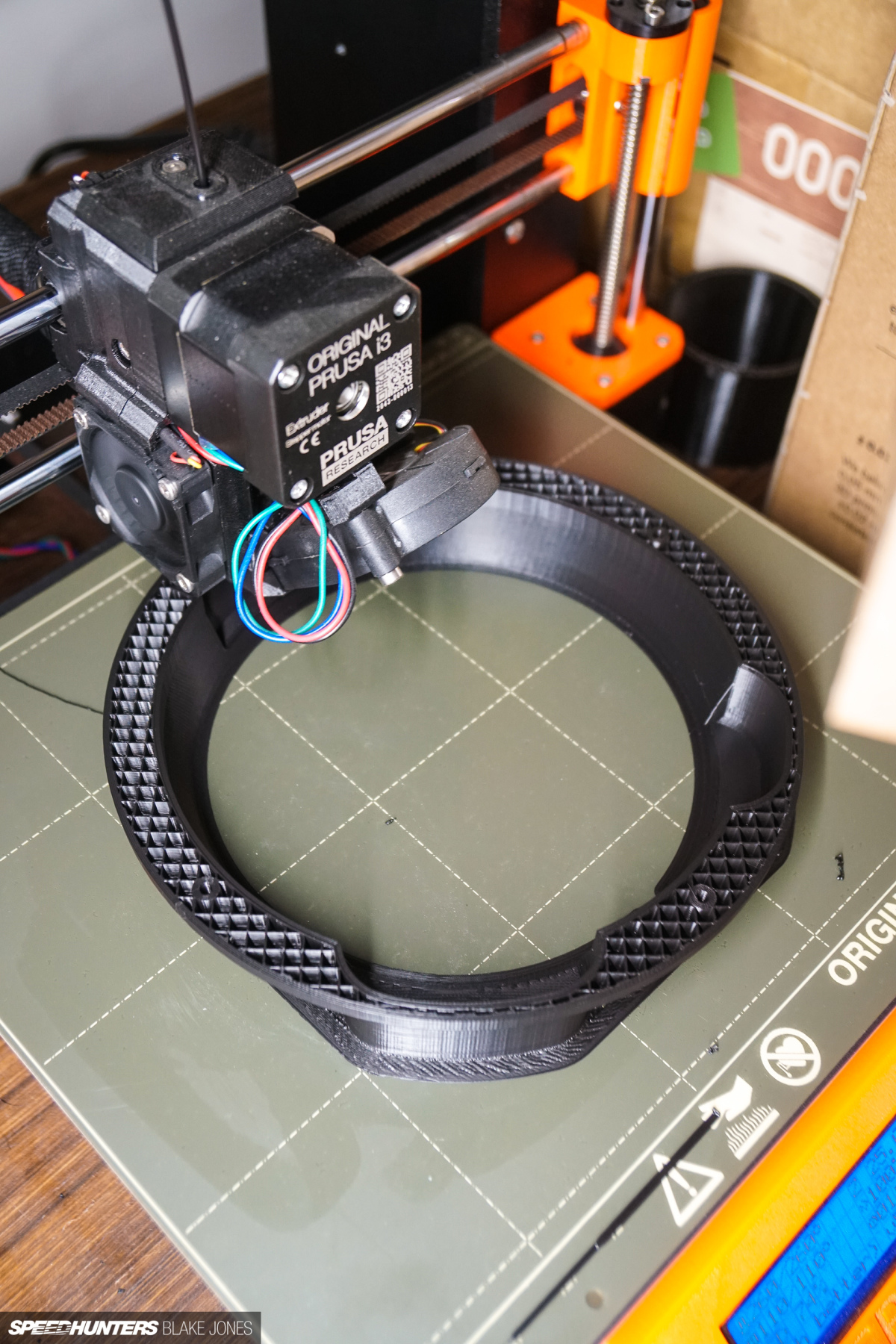
Getting a 6.5-inch speaker to fit a hole made for a 4-inch means either cutting a bigger hole, or making an adapter. There’s plenty of free space in the door trim to house a larger speaker, so I loaded up Fusion360 and designed an adaptor to space the speaker out from the aluminium door panel. I could’ve taken a Dremel to an off-the-shelf speaker ring to make it fit, but I’d prefer to invest the time into designing a proper solution than quickly hacking something up which will only annoy me further down the track.
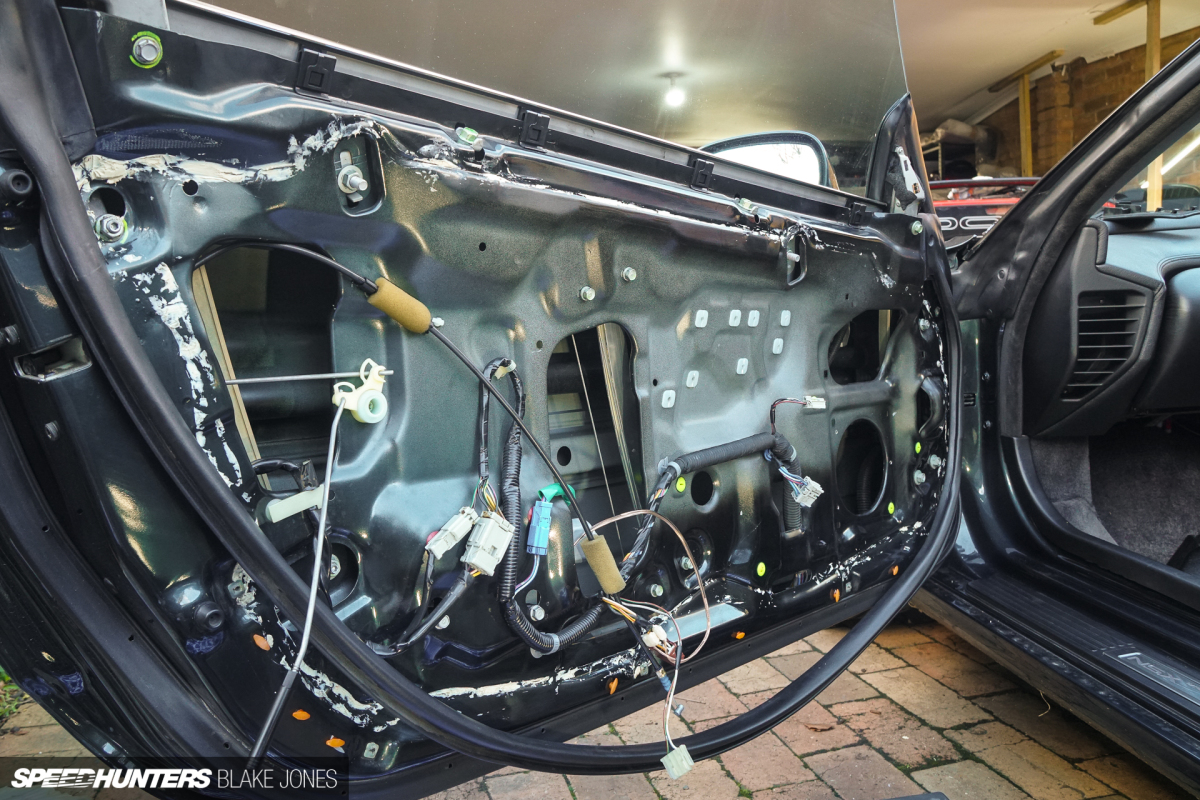
The plastic part would be ready in about eight hours, so I returned to the garage while the 3D printer did its thing.
A good home speaker box is usually enclosed (or ported with a specific audio purpose) and made of a vibration-absorbing material like wood so as to be as ‘dead’ – resonance free – as possible. The thin sheet metal of a car door is none of these things, which makes it a terrible place to install a speaker from an acoustic point of view. Ben had been feeding me tips as I worked through this upgrade, and top of his list was good sound deadening treatment on the doors. Even a cheap speaker in a well-deadened door should sound better than a high-end one left to shake an un-deadened door panel. I got to work cutting the sheets of Dynamat Super Lite to size and carefully applying it to the panel.
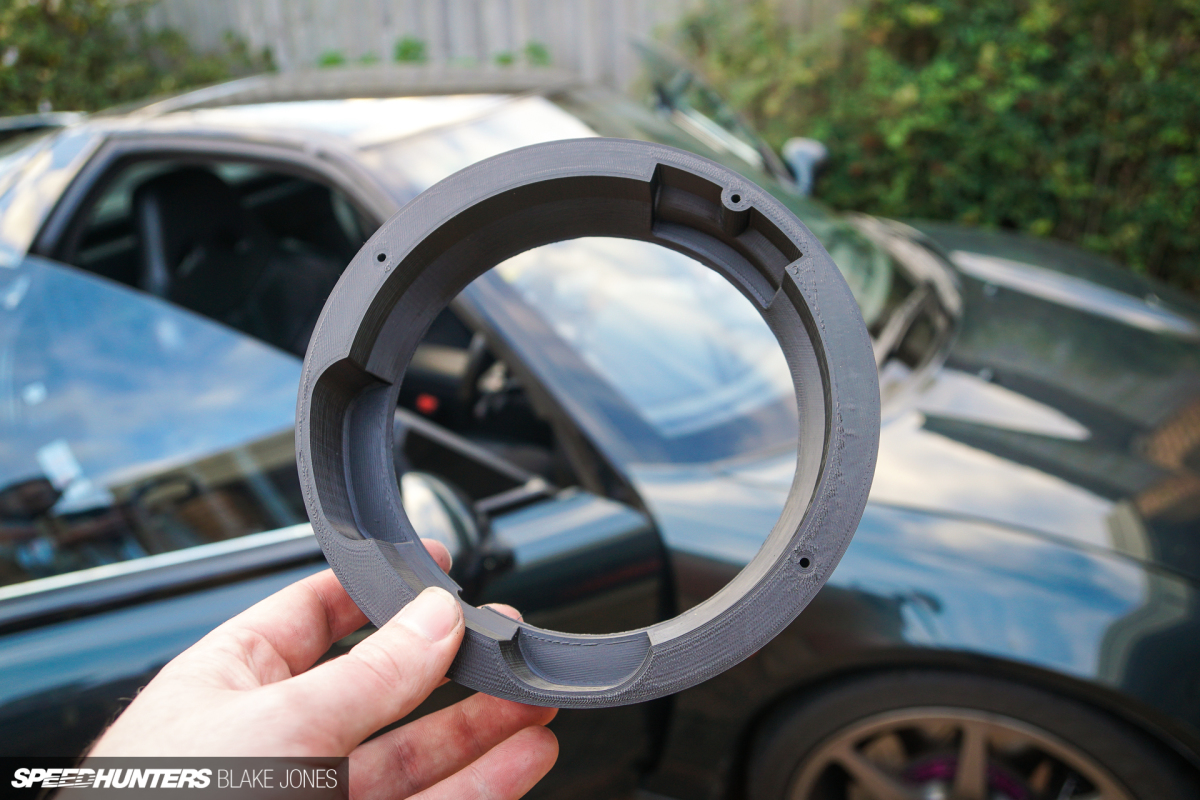
Et voila: the finished speaker mount: solid, light and fit-for-purpose. The NSX inner door skin is not flat, so it took careful placement of different features to ensure the mount could sit flat against the limited mounting surface space.
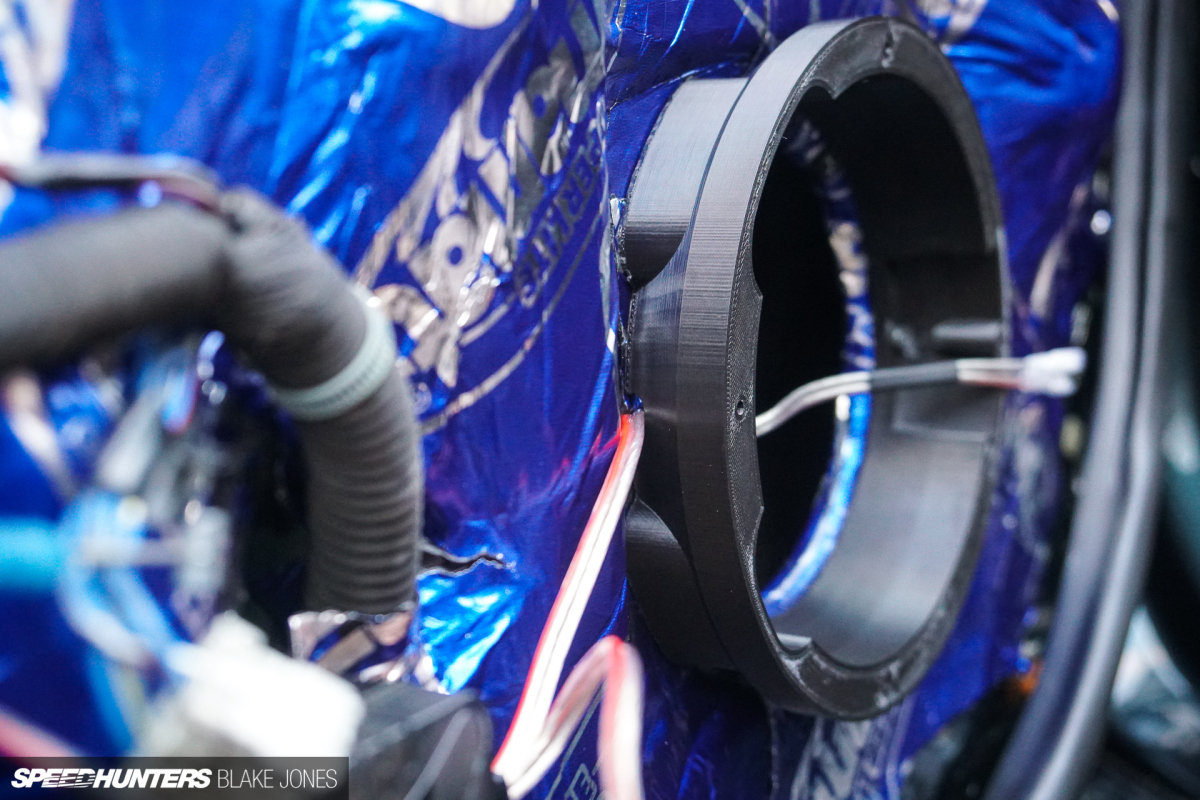
It was designed with a small channel for the cables to pass through and connect to the rear of the speaker. The ‘Tri Pack’ of Dynamat was just enough to cover the two door skins with a little left over to place inside the door cavity behind the speaker driver. It added a moderate 1.05kg (2.31lb) of extra weight per door.
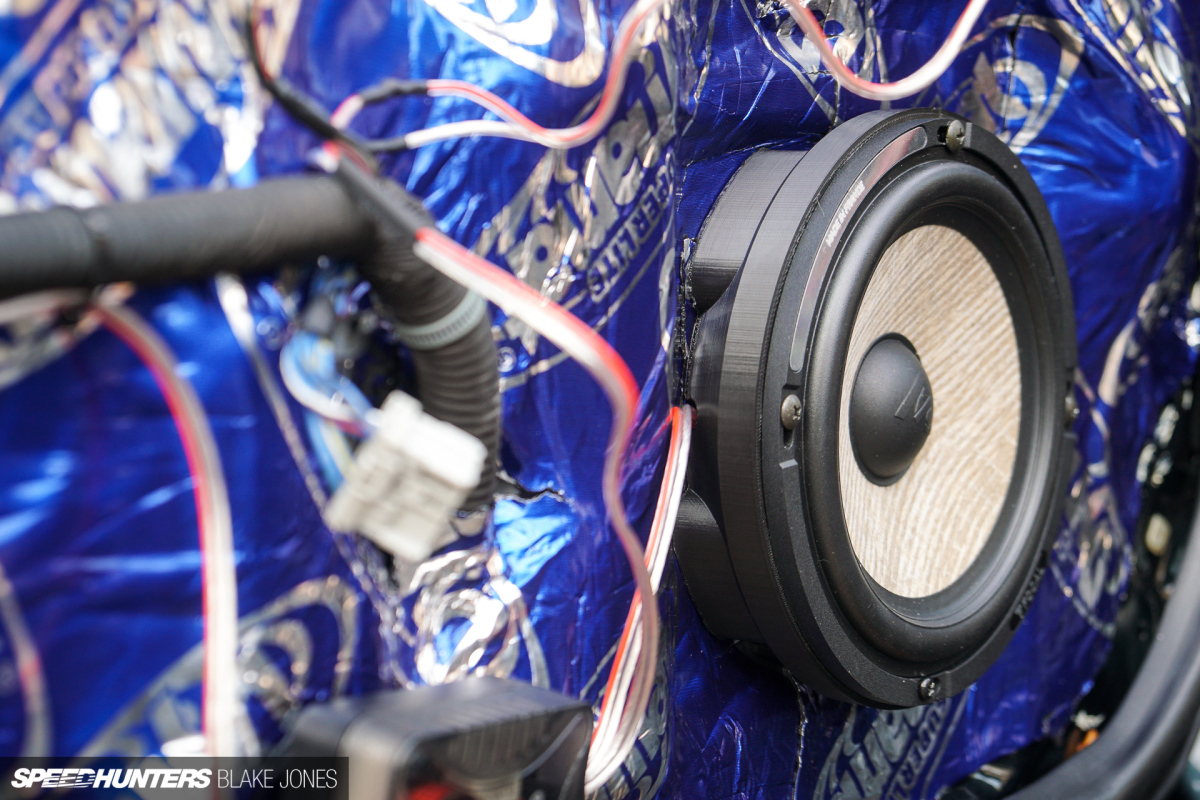
Speaker mounted, it was time for a quick test to make sure everything worked before refitting the door trim.
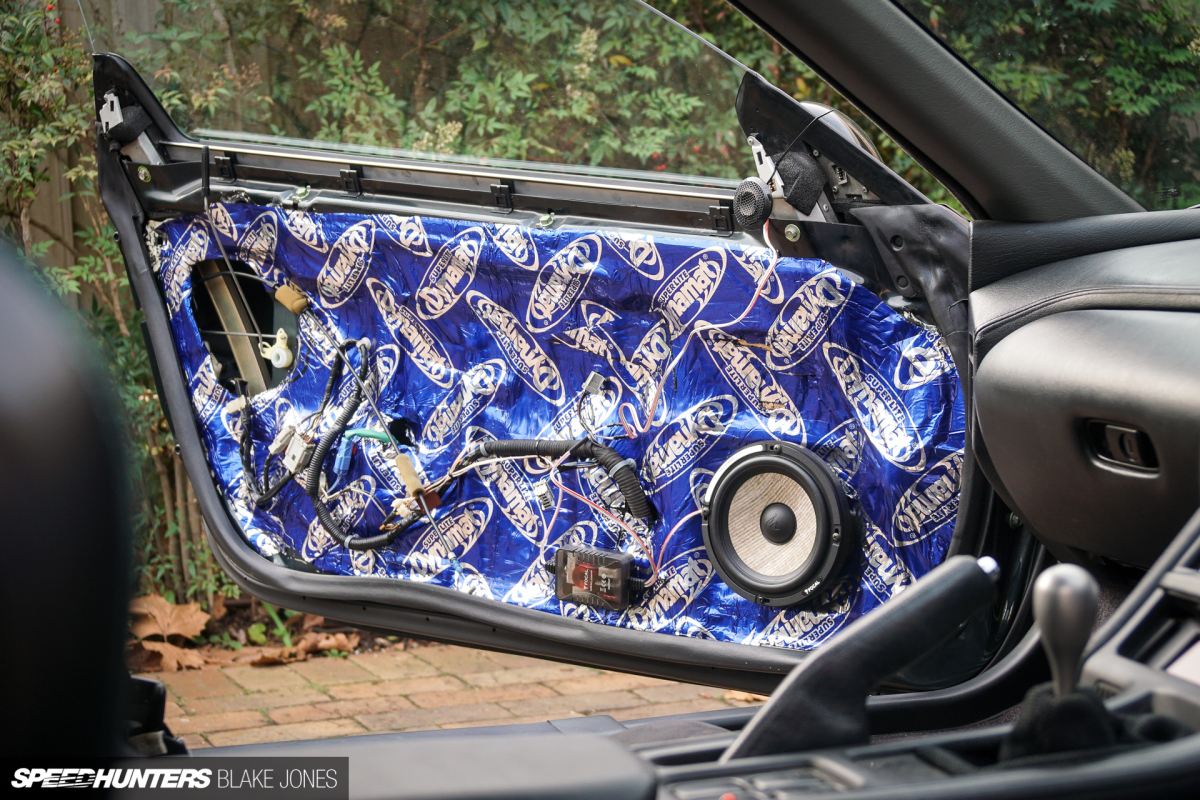
One last job was to grease the power window mechanism which was making a pop-pop-pop sound on the way up (a common problem for the NSX). Then the remaining service hole for the door internals was sealed with clear plastic before the trim was replaced. At this point it would be job done for a coaxial speaker install, but the tweeters still needed to be mounted.
An advantage of the component speaker design is being able to place the tweeter in a better location than a coaxial, which usually sits in the lower door panel. High frequencies are much more directional, so getting them closer to the driver’s ear height and angled towards the centre of the cabin is important.
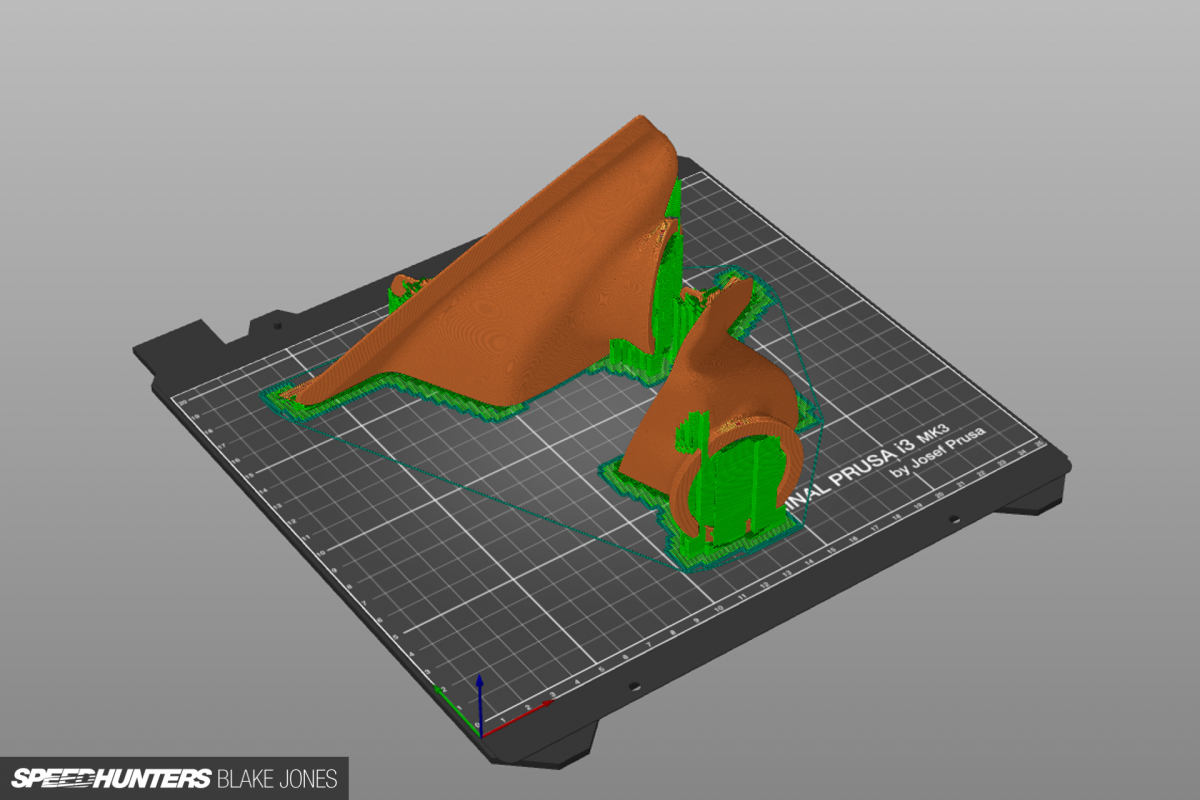
I consulted with Marc Perez of MITA Motorsports, who specialises in parts for the NSX and S2000. Marc is currently working on producing replacement interior trim pieces for the NSX to support the market where Honda’s own parts department has unfortunately started to falter.
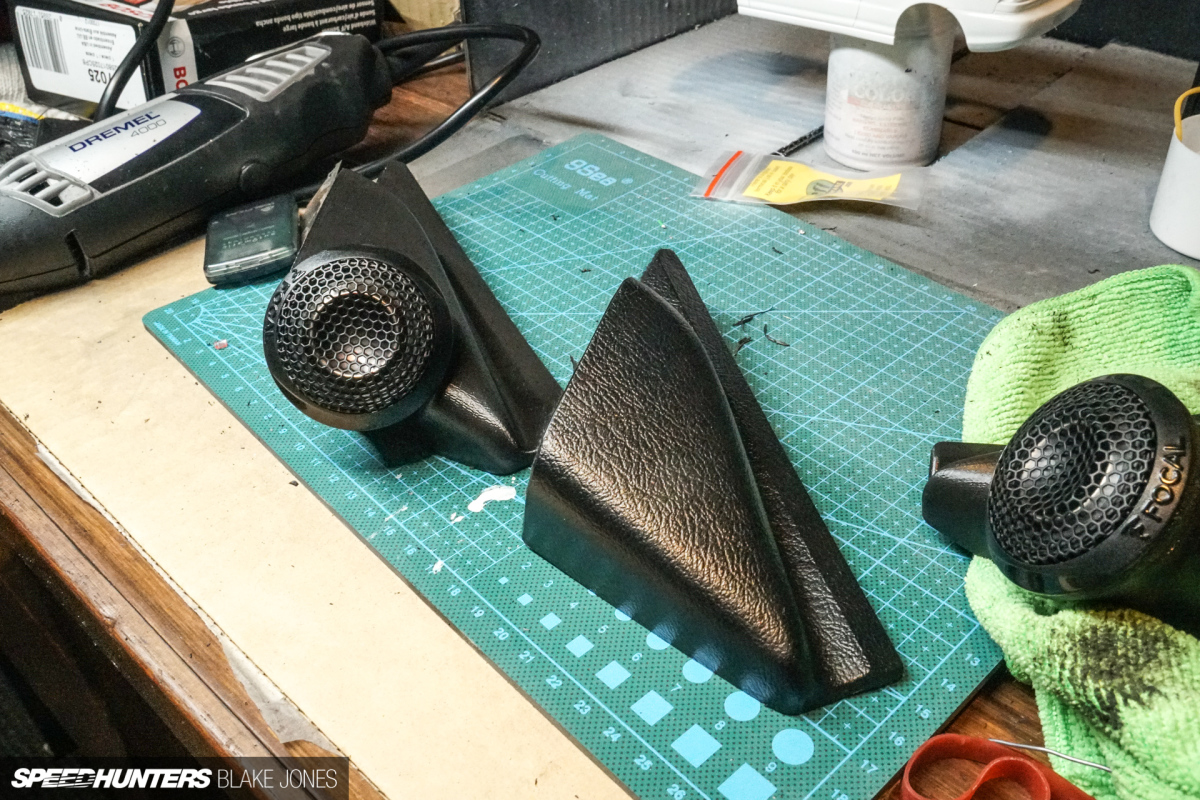
The ‘front sash covers’ are easily misplaced or broken when the door trim is removed, so this is one of Marc’s first replacement interior products and it also happens to be an ideal location to mount a tweeter. Once again I plugged myself into Fusion360 so Marc’s original design could now house a tweeter and still clip into place as the factory intended.
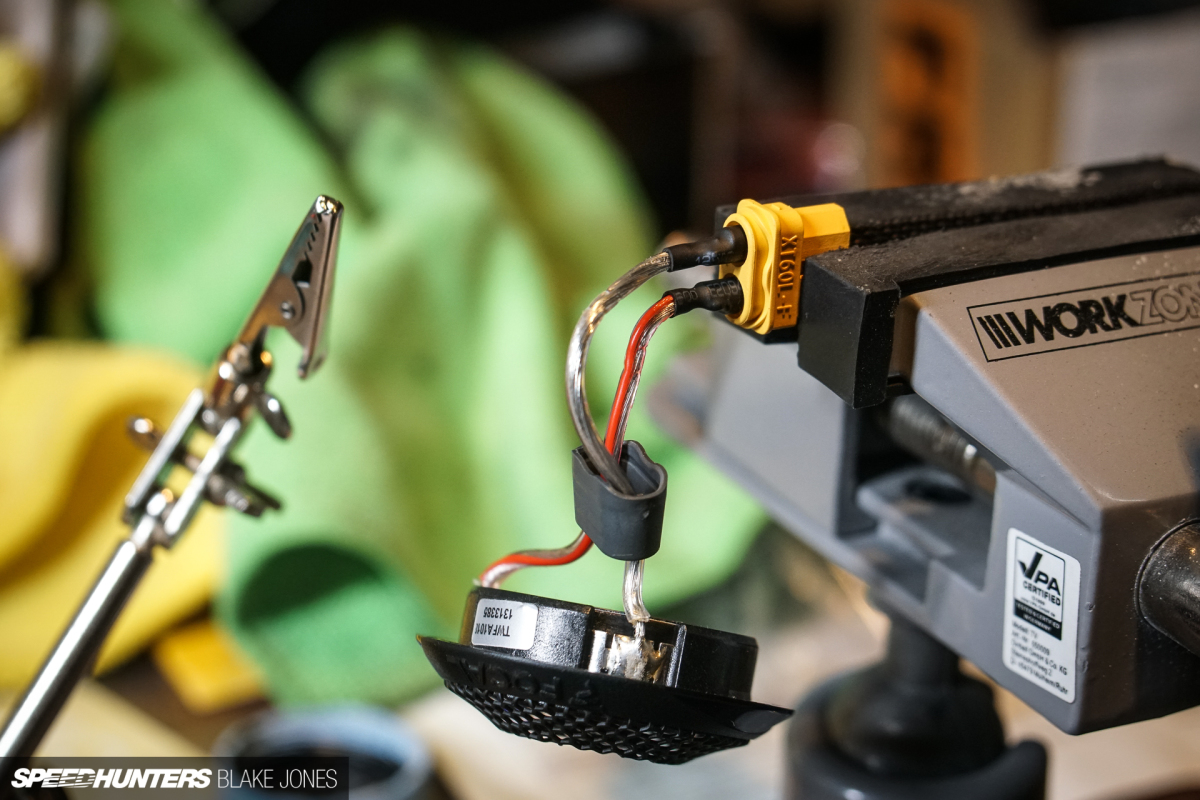
I used these XT-style connectors popular in the R/C world as a reliable joiner to enable removal of the tweeter and mount if required for future servicing.
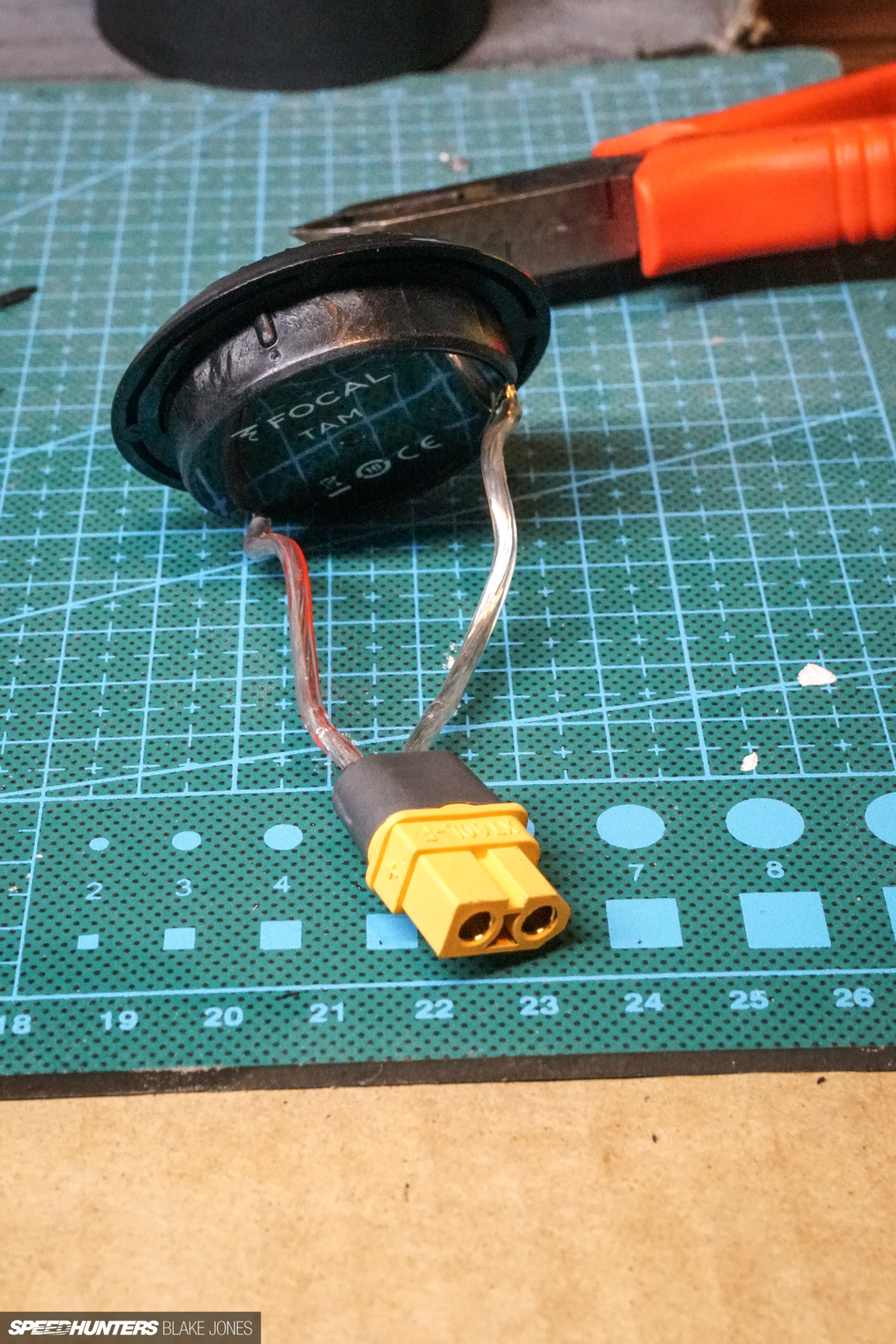
They have a dedicated positive and negative meaning it’s impossible to plug it in backwards.
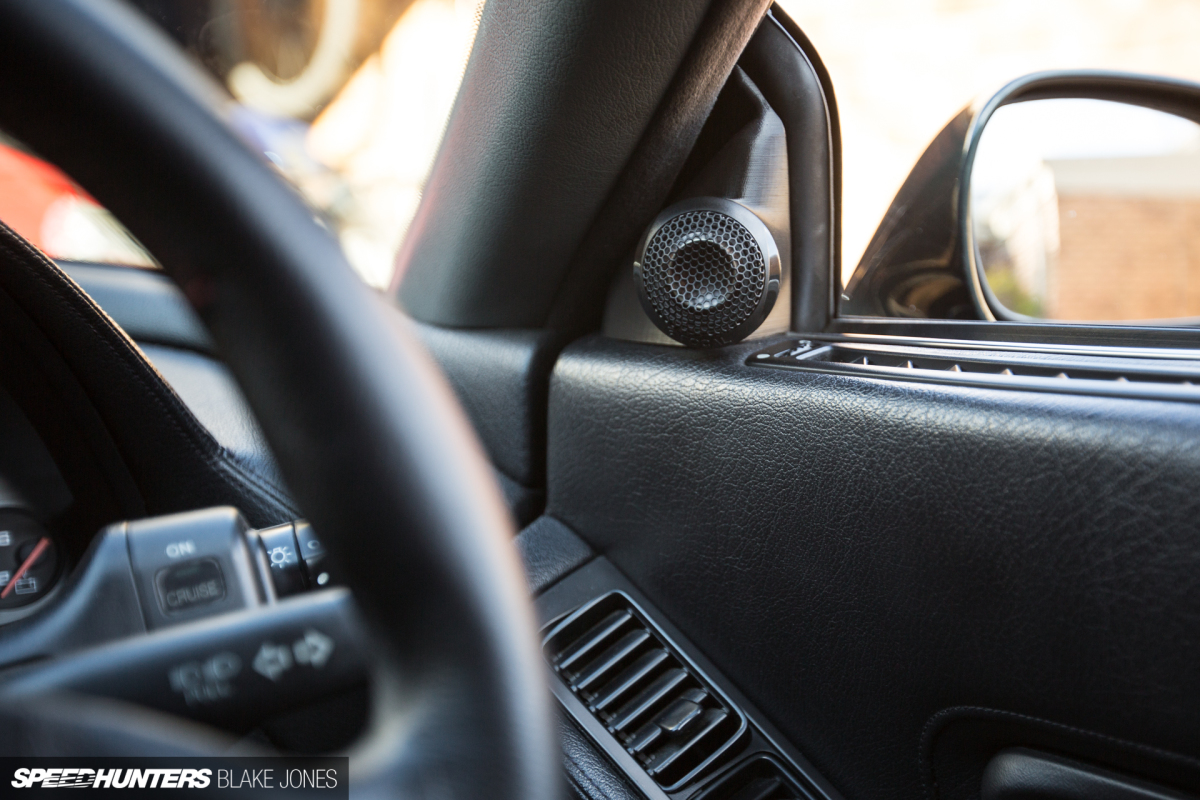
These parts are printed from ASA filament, an evolution of ABS plastic which is prevalent in vehicle interiors across the world – including the NSX. It is UV and temperature stable for this application so I expect it to last forever.
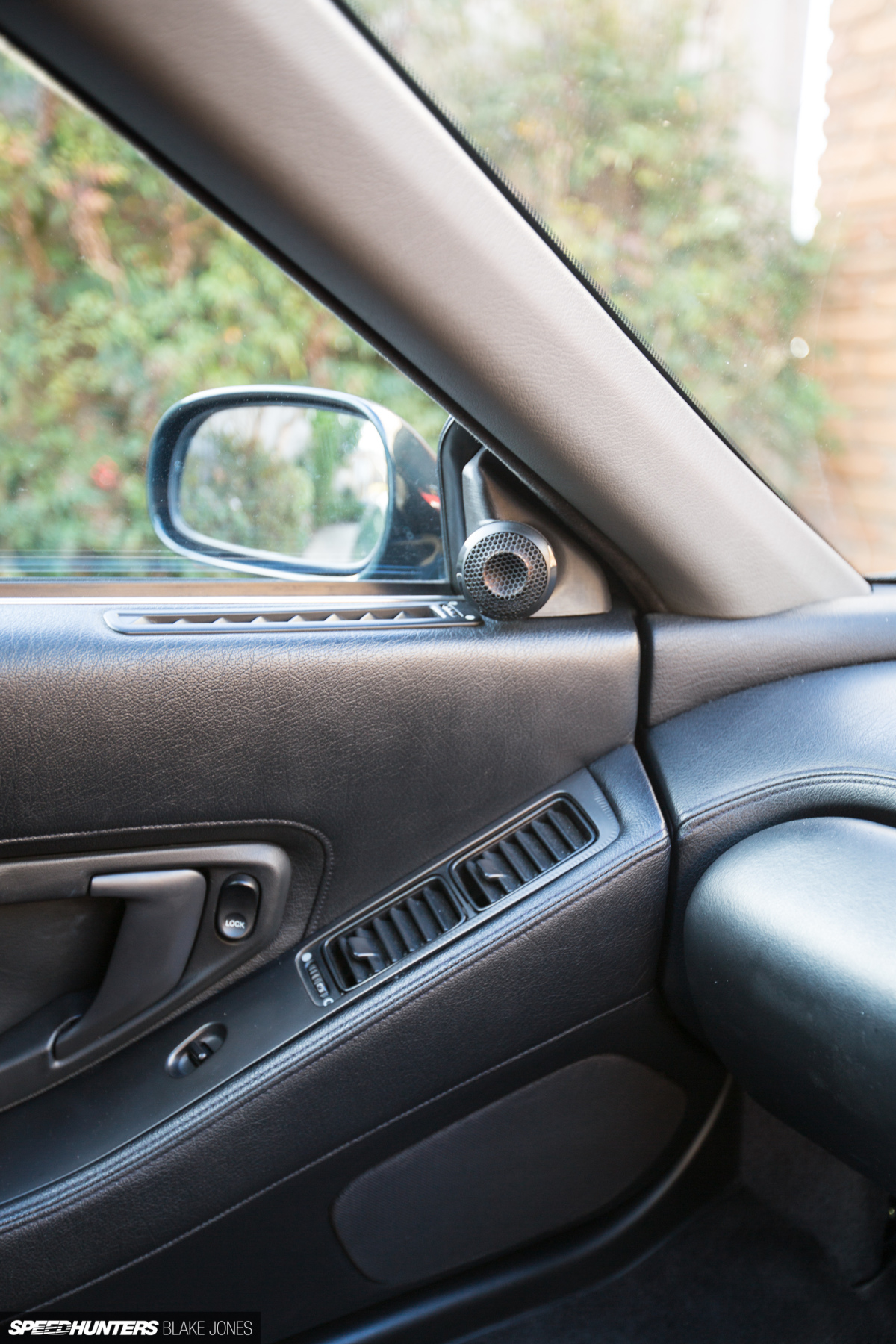
The only disappointment is that the 3D-printed surface (characterised by faint horizontal lines) does not match the ‘faux leather’ imprint of the original Honda part – but not to fear, Marc is working on nailing that for his reproduction pieces. Now I just need to slip one of my tweeter mods into his production line!
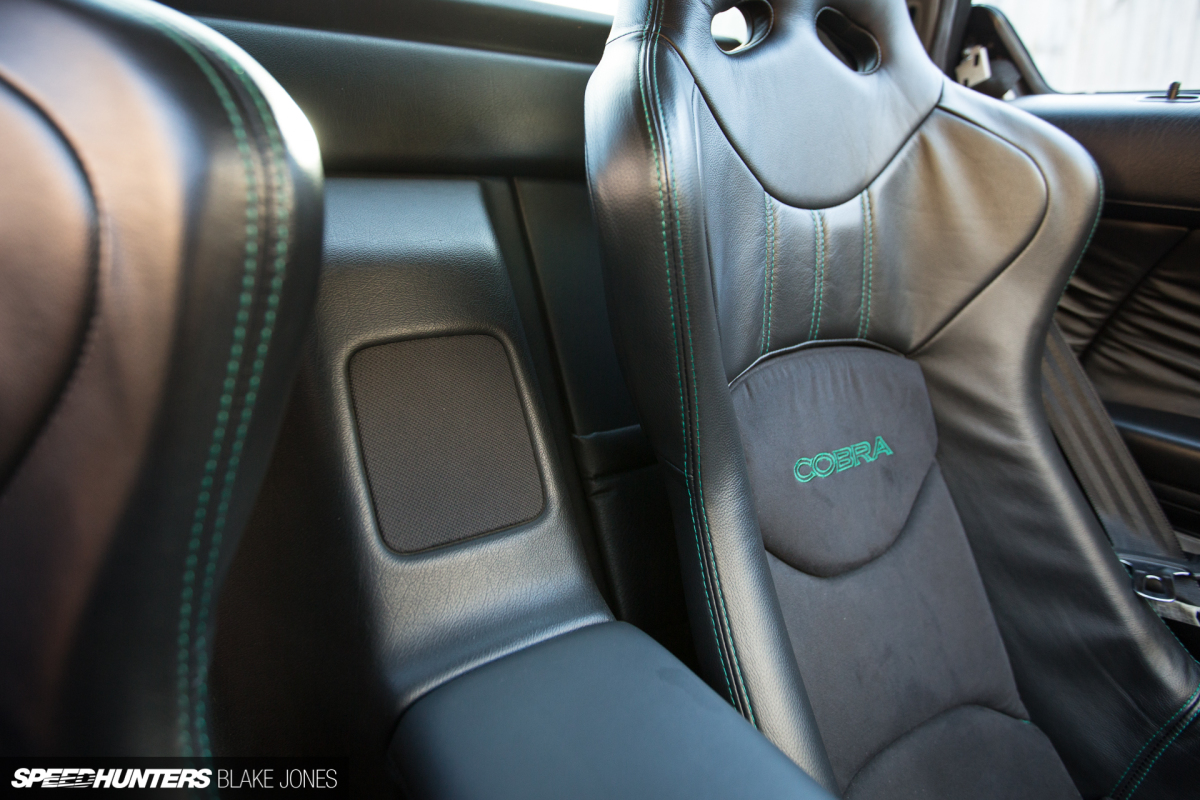
I’d almost forgot this one – from factory the NSX is a four-speaker system (two door speakers, one centre speaker and one subwoofer). After my upgrades I was left with the centre speaker, which sits between the passenger and driver as seen here. Most people ditch this small speaker in a custom setup because of the difficulty of getting a good, volume-controlled centre channel (L+R). After a bit of problem solving, I decided to run the Focal amp in 3-channel mode and direct the mono signal (which would typically drive a subwoofer) with a full frequency range to the centre speaker. The stock paper-cone driver was swapped out for a Dayton Audio PS95-8 3.5-inch full range speaker. I selected a higher-resistance 8ohm speaker to lower the volume relative to a 4ohm, but the setup also has gain and frequency control via the amplifier.
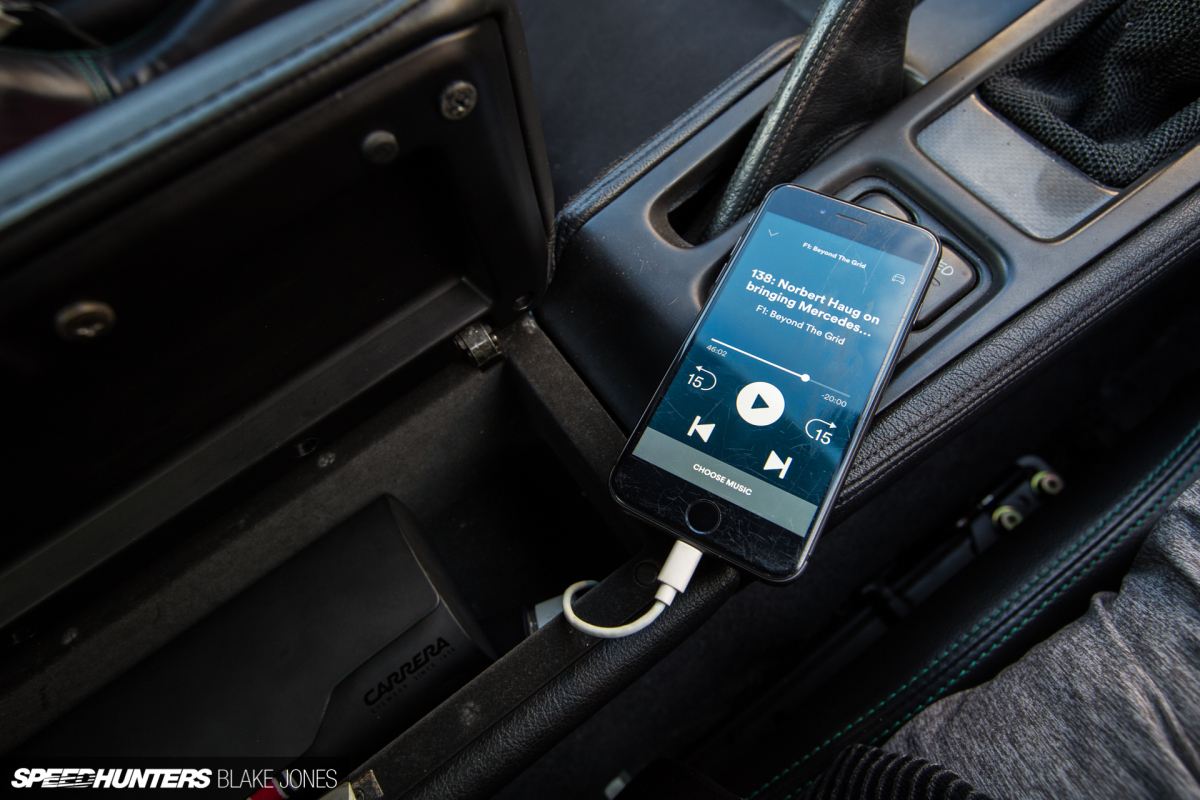
While I had the interior disassembled I took the opportunity to run a USB cable from the rear of the head unit to the centre console storage. From here it can be hidden away but still charge and supply the music, GPS etc.
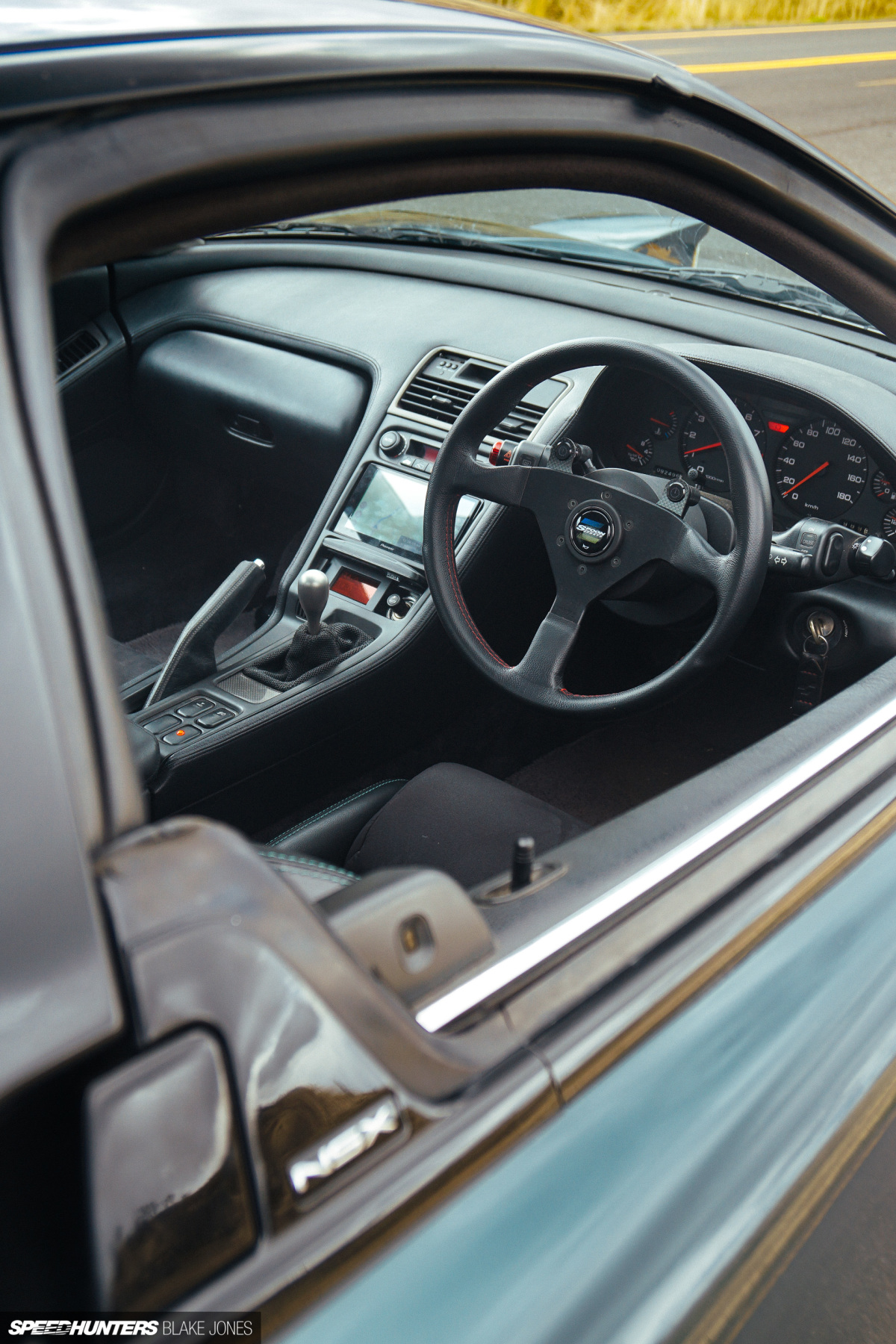
So after the time, money and 3.7kg (8.1lb) extra weight, was it all worth it? I’m relieved to say yes, absolutely.
Aside from the obvious convenience of finally having CarPlay (and an English-language head unit) the sound quality has really impressed me. It’s well balanced throughout the frequencies, goes loud enough to make my eyes water, and honestly transforms long drives in the car into something to look forward to. I’ll admit that at lower volume the quality is just short of a very good OEM system (i.e. modern Lexus), but we’re talking something with at least 10 speakers and a cabin quiet enough to hear a fly fart. Once the outputs get loud and bass-heavy, however, the new NSX setup punches much harder. I’d heard that new speakers do require some running in (just like a new engine) and that has certainly proven to be true for the Focals – they are getting better and better as time goes on.
Rose-tinted GaugeArts
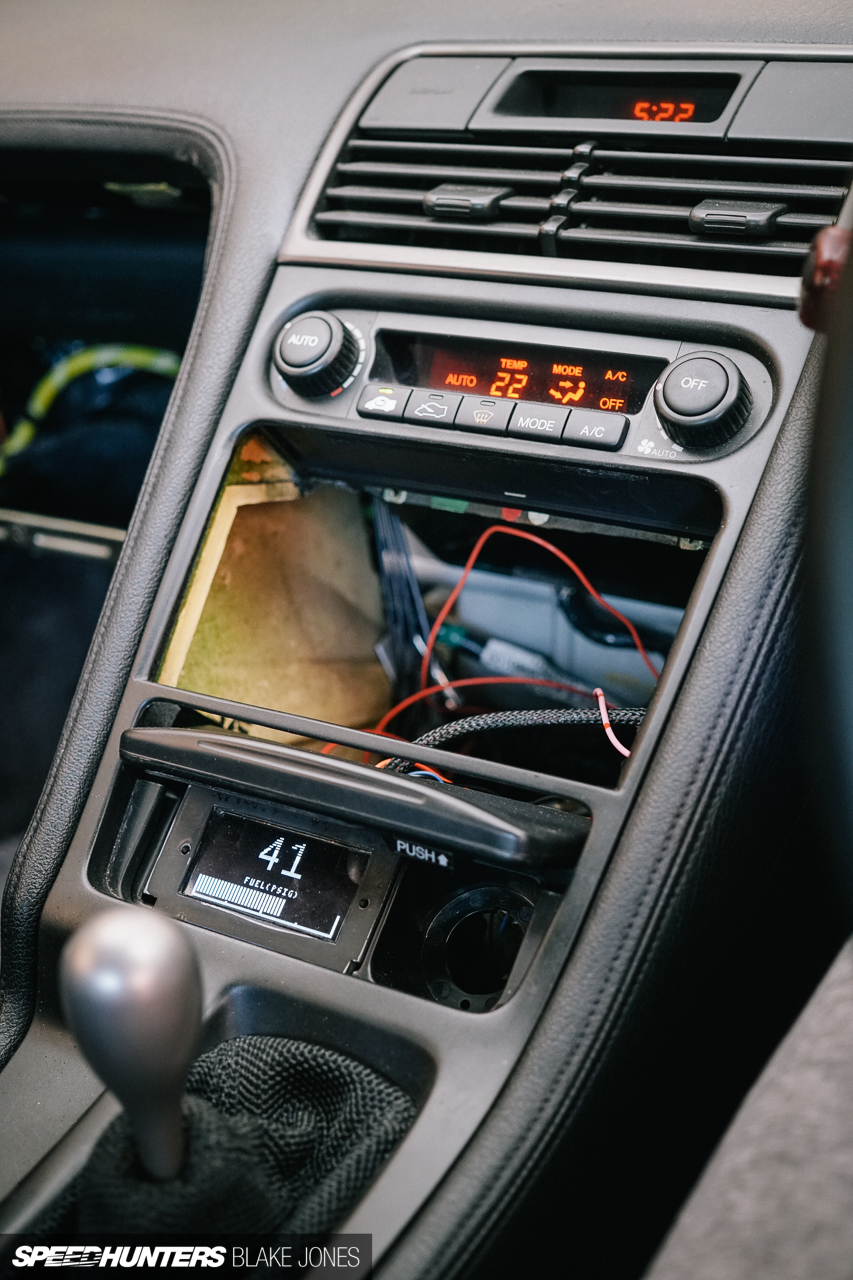
You may recall the prototype 3D-printed mount for the GaugeArt screen from the last progress update story. The functionality of the screen was great, but once the ashtray lid was opened the appearance left a little to be desired.
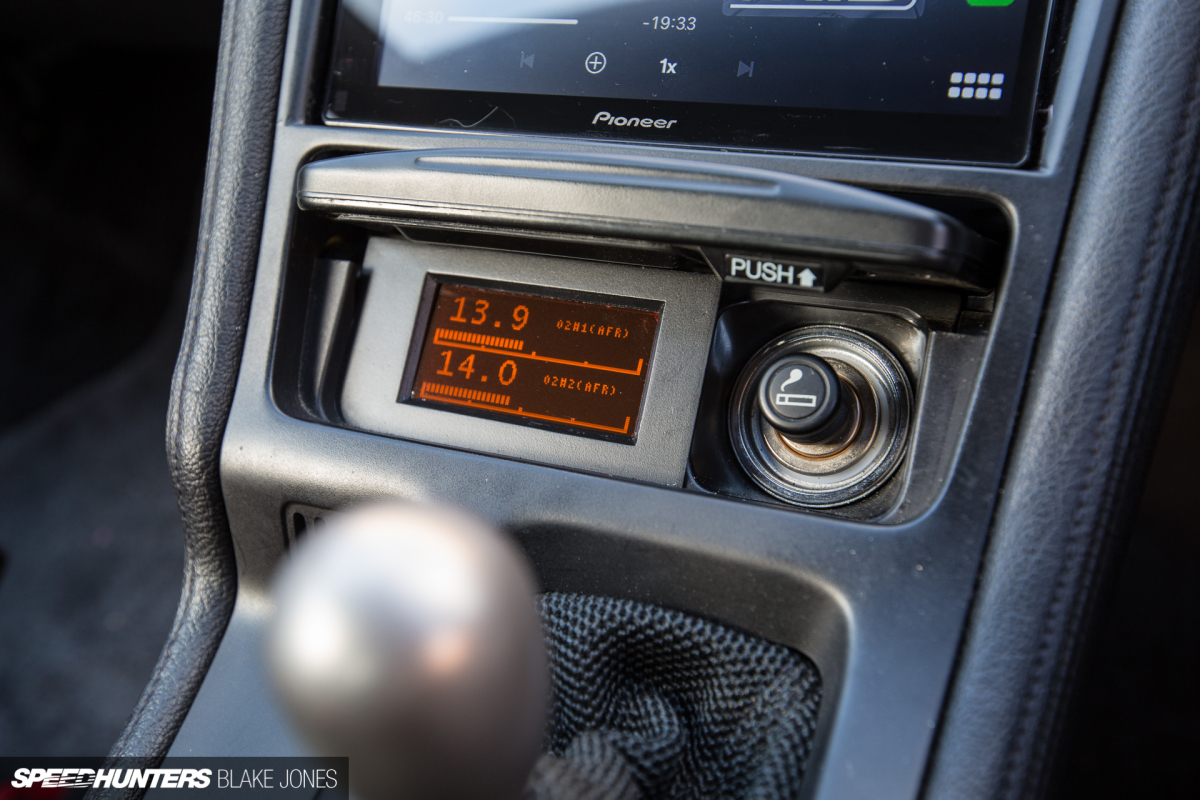
A redesigned, printed and painted mount tidies things up nicely. I also managed to source an orange LCD screen to the same specs as the original GaugeArt unit, so swapped out the white screen. A layer of red tint was required over the screen to get the colour to be an almost-match to the stock digital displays and lamps. A small detail, but one I think helps with the overall ‘integrated’ feel I’m going for.
Truth be told, I rarely close the lid now that the install is properly finished. The display doesn’t look out of place in the stock-ish interior and being able to keep an eye on pressures and temps is reassuring.
Cool Story, Bro
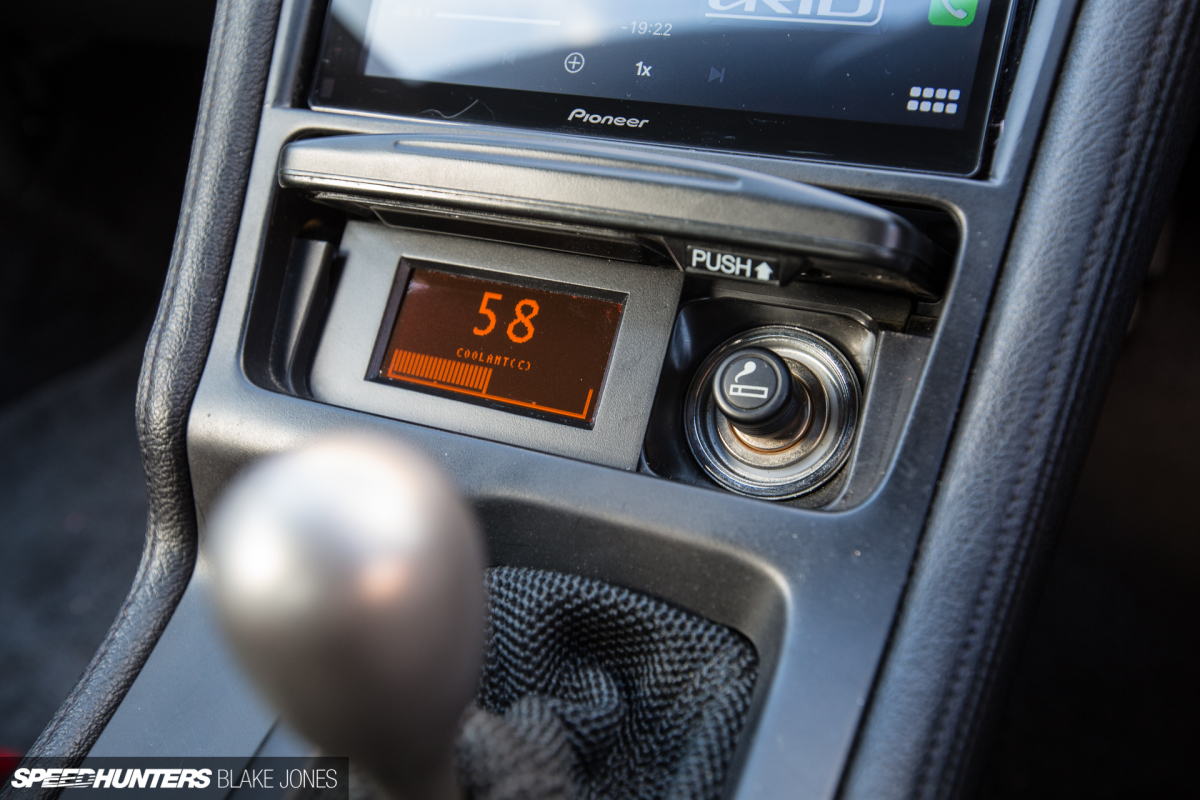
Even before these finishing touches were applied, the GaugeArt unit had already paid for itself by bringing my attention to a concerning coolant temperature creep at a hot Winton Motor Raceway track day. I’d resolved to do something about the situation before the next trip so I could worry less about engine temps and more about putting together a clean and fast lap.
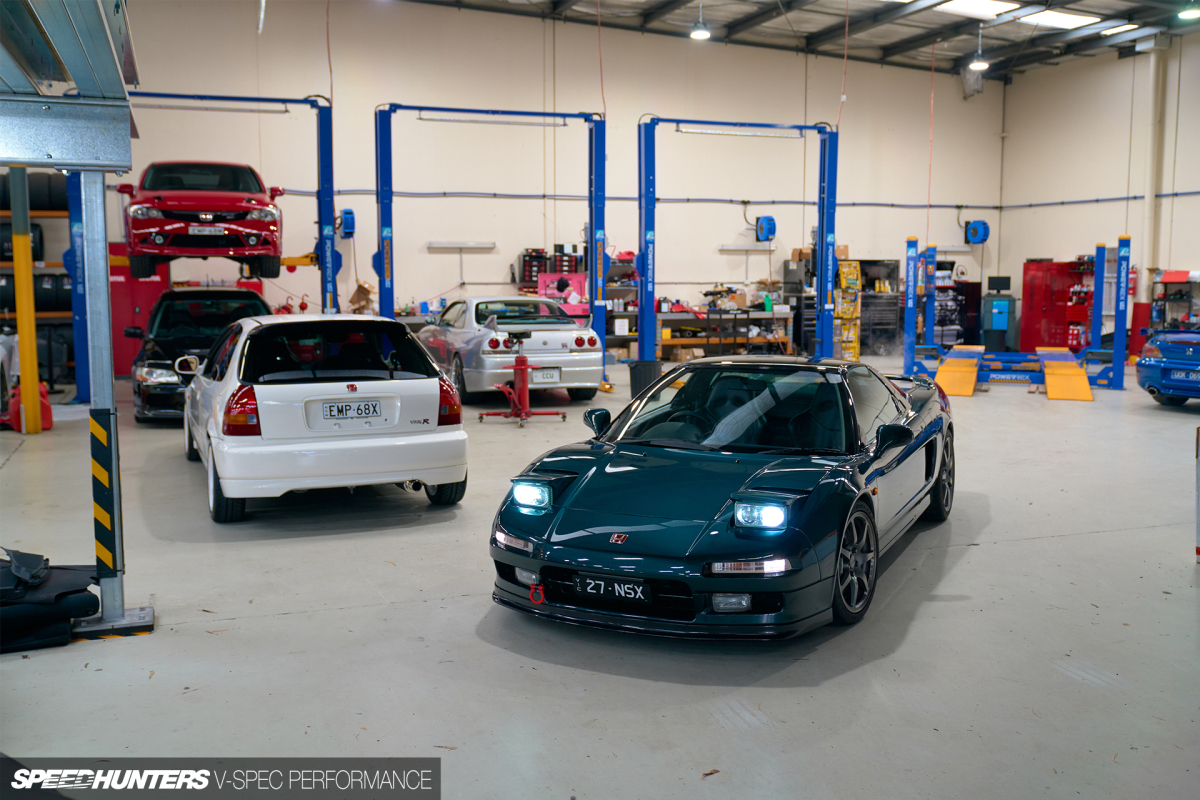
Like most mid-engined cars, the NSX has a fairly complicated cooling system with five drain bolts and four bleed points, so I entrusted the job to the mechanics at V-Spec Performance, who maintain a few customer NSX’s as well as the shop’s own NSX-R. While the guys got started on draining the coolant, I went for a wander to see what goodies I could find around the shop.
A few collectors can claim to have a scale Mine’s R34 GT-R on their shelf, but not many can say the real thing is downstairs.
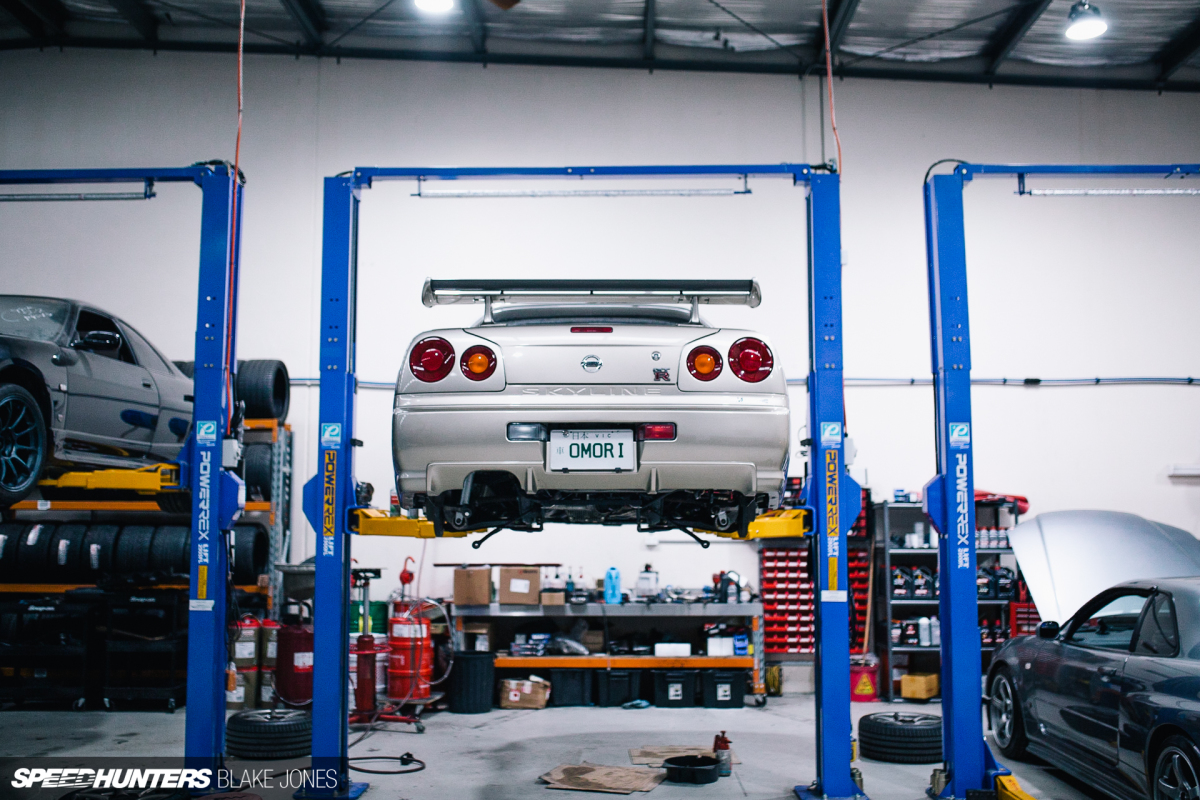
These days V-Spec houses a wide variety of machinery but is still known primarily for specialisation in GT-R maintenance and modification.

Old, new or in between.
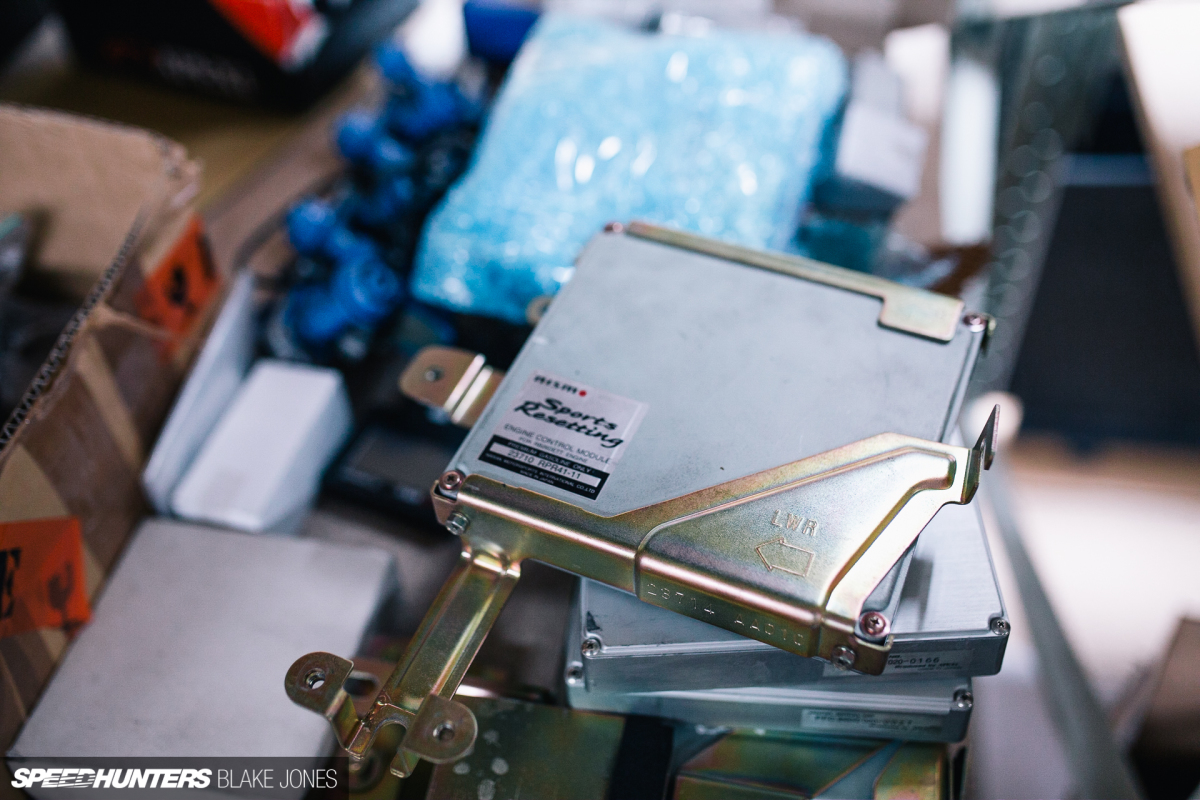
I don’t know enough about Nissan ECUs, but I’m sure Dino could tell us all about these Nismo ‘Sports Resetting’ computers.
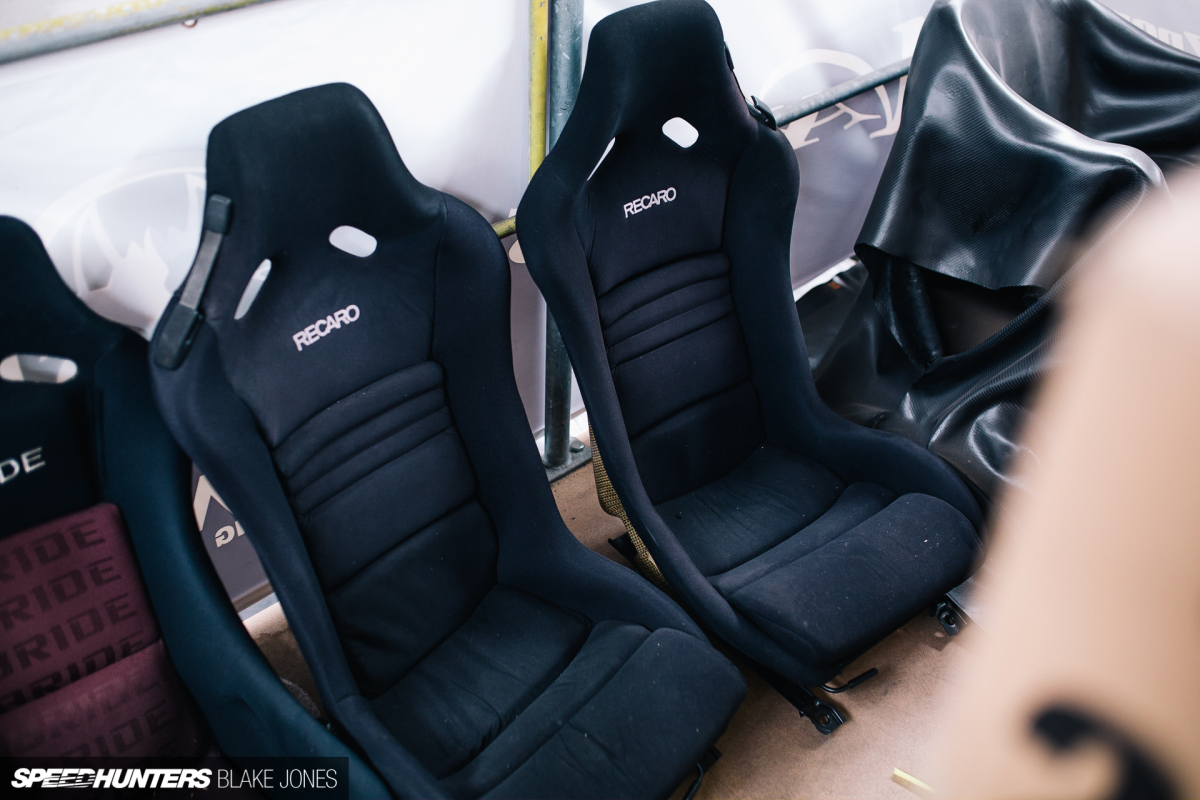
These carbon-Kevlar Recaro seats are from an RX-7 Spirit R, and share the same shell as the NSX-R. Whether Mazda or Honda, these original seats command crazy money from collectors (seems like that’s true for almost everything original these days).
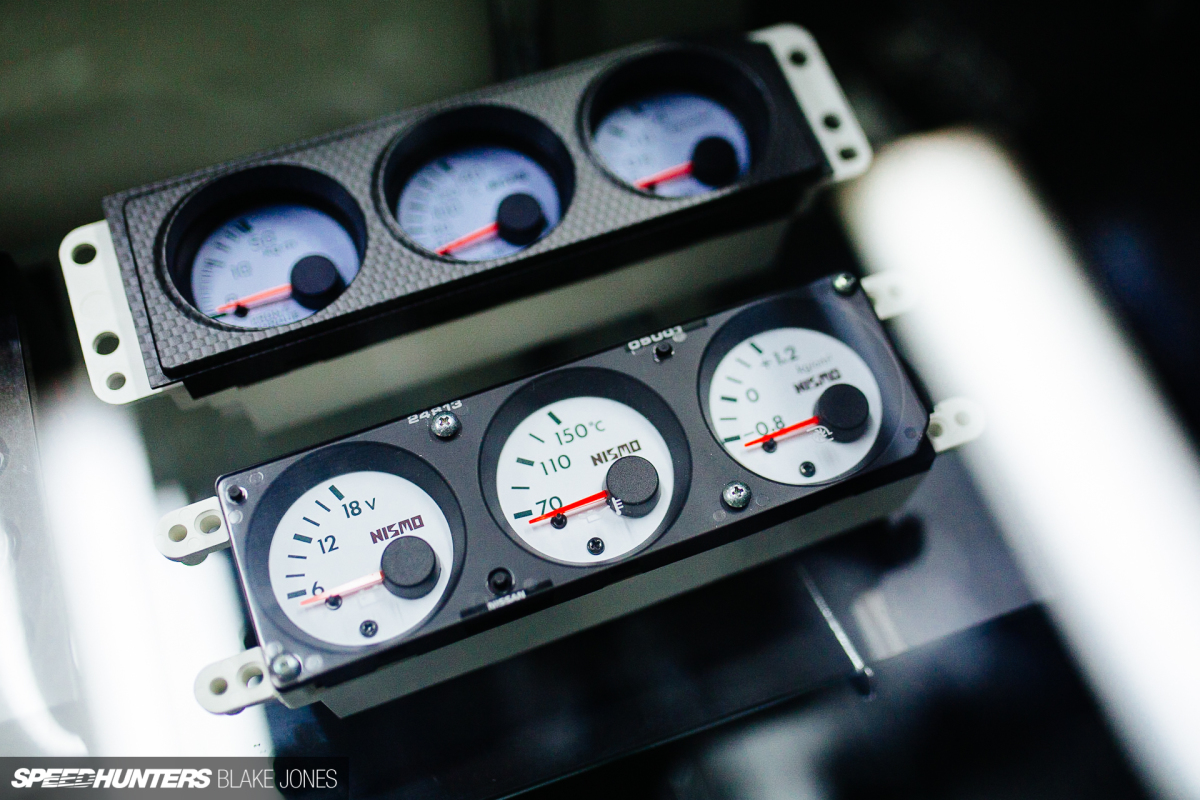
More Nismo bits – these really nicely designed integrated gauges – who can guess what model these belong to?
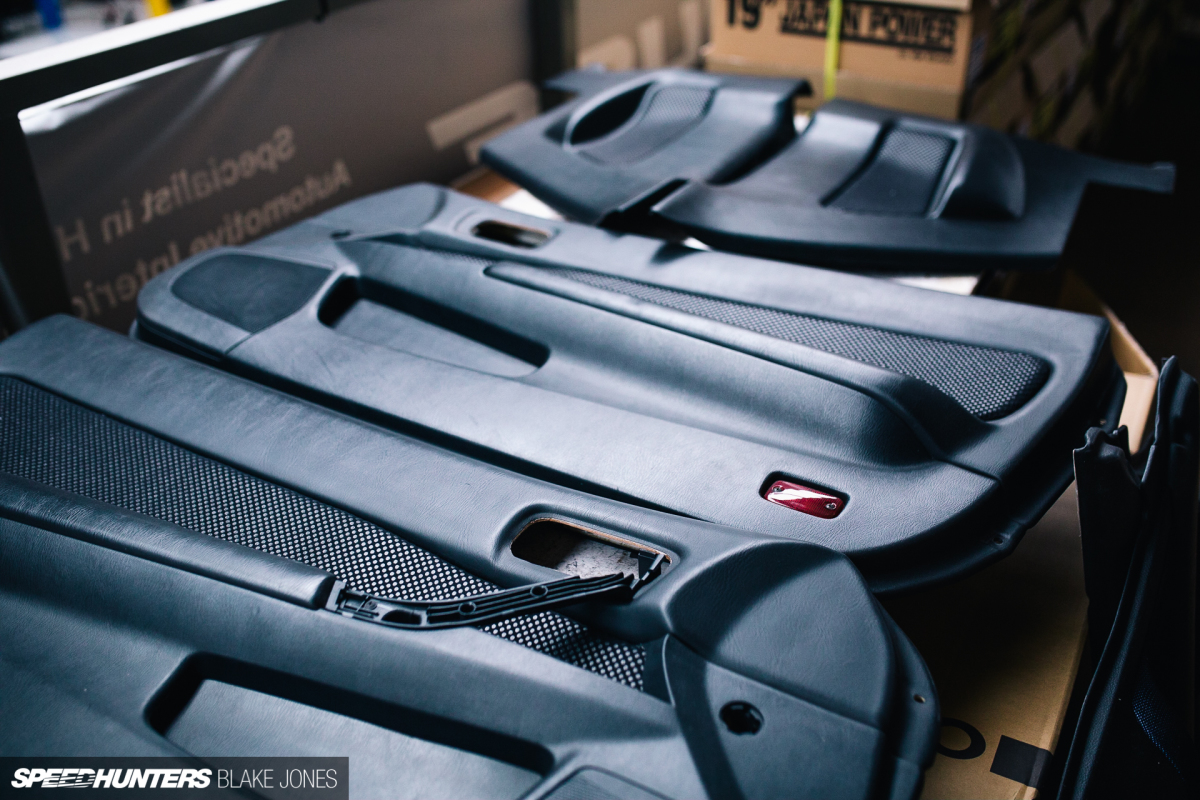
As more and more of these JDM specials get de-modified (in my opinion, a disappointing trend) stock bits are getting harder and harder to find, unless you’re V-Spec.
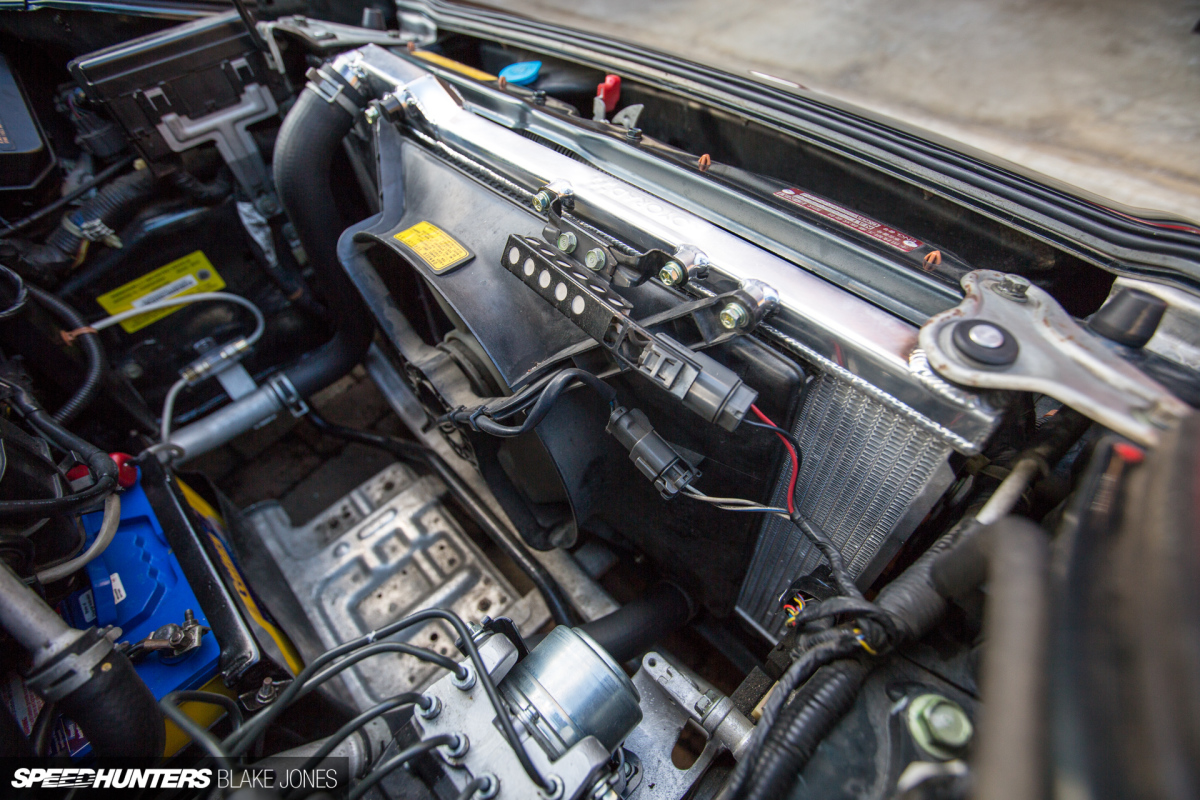
Several hours later… and the radiator had been replaced, and the system filled & bled with 13L of Honda’s Type 2 coolant mix.
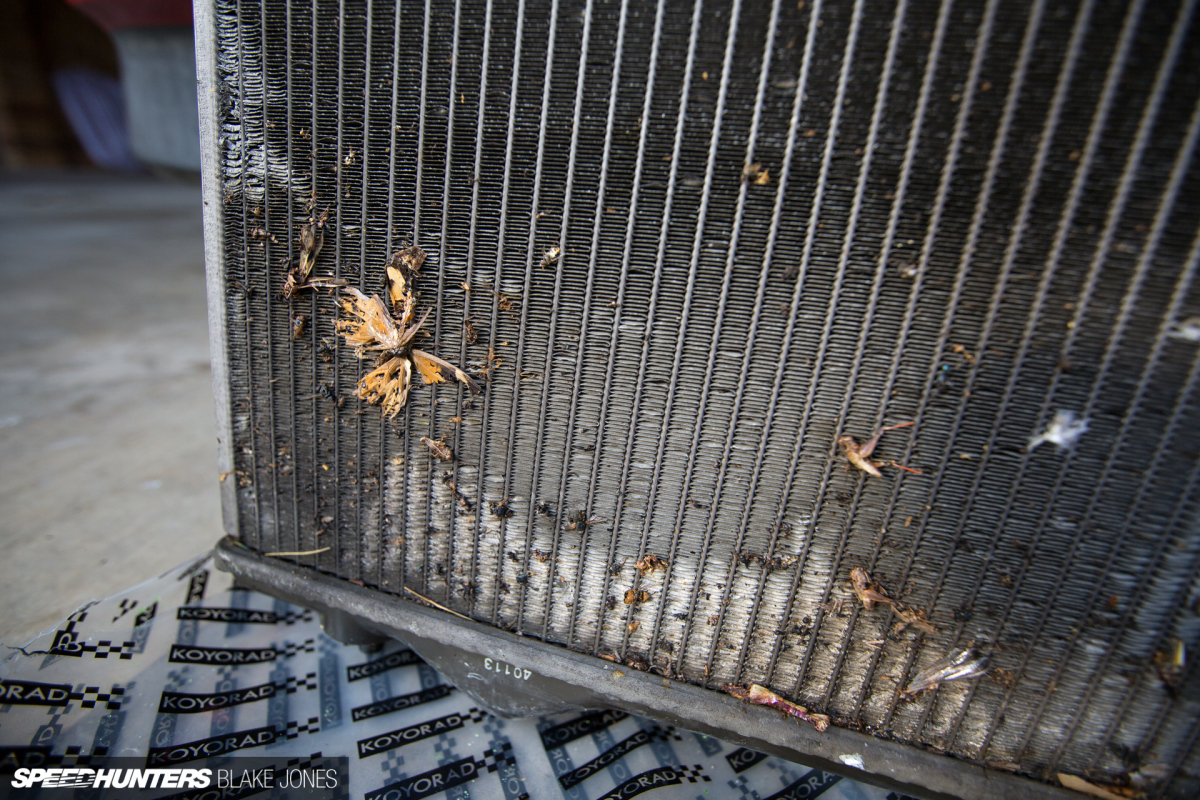
The removed radiator showed its age (I’d guess it to be the original from the ’92 build) but didn’t display any signs of being close to failure which is a nice indicator of health for the rest of the vehicles coolant pipes and passages. The rubber hoses were replaced when the engine was dropped two years ago, so they were all fine. I think some of these bent fins on the bottom were from me getting a bit overenthusiastic with the pressure-washer, so I’ll need to be more careful with the new one.
I haven’t had a chance to push the cooling system on track with high ambient temperatures yet, but have seen a 3-degree drop in the normal cruising temp (from 86°C to 83°C) which bodes well. The Honda Nationals event later in the year will be a good test – and hey, if temperatures do still nudge up it’s a great justification for the NSX-R-style vented bonnet I’ve been dreaming about.
So there you have it, the first Project NSX update where the car is absolutely no ‘faster’ at the end. And I’m surprised to say that doesn’t bother me one bit.
Blake Jones
Instagram: blaketjones
blake@speedhunters.com
OFFICIAL SPEEDHUNTERS SUPPLIERS









